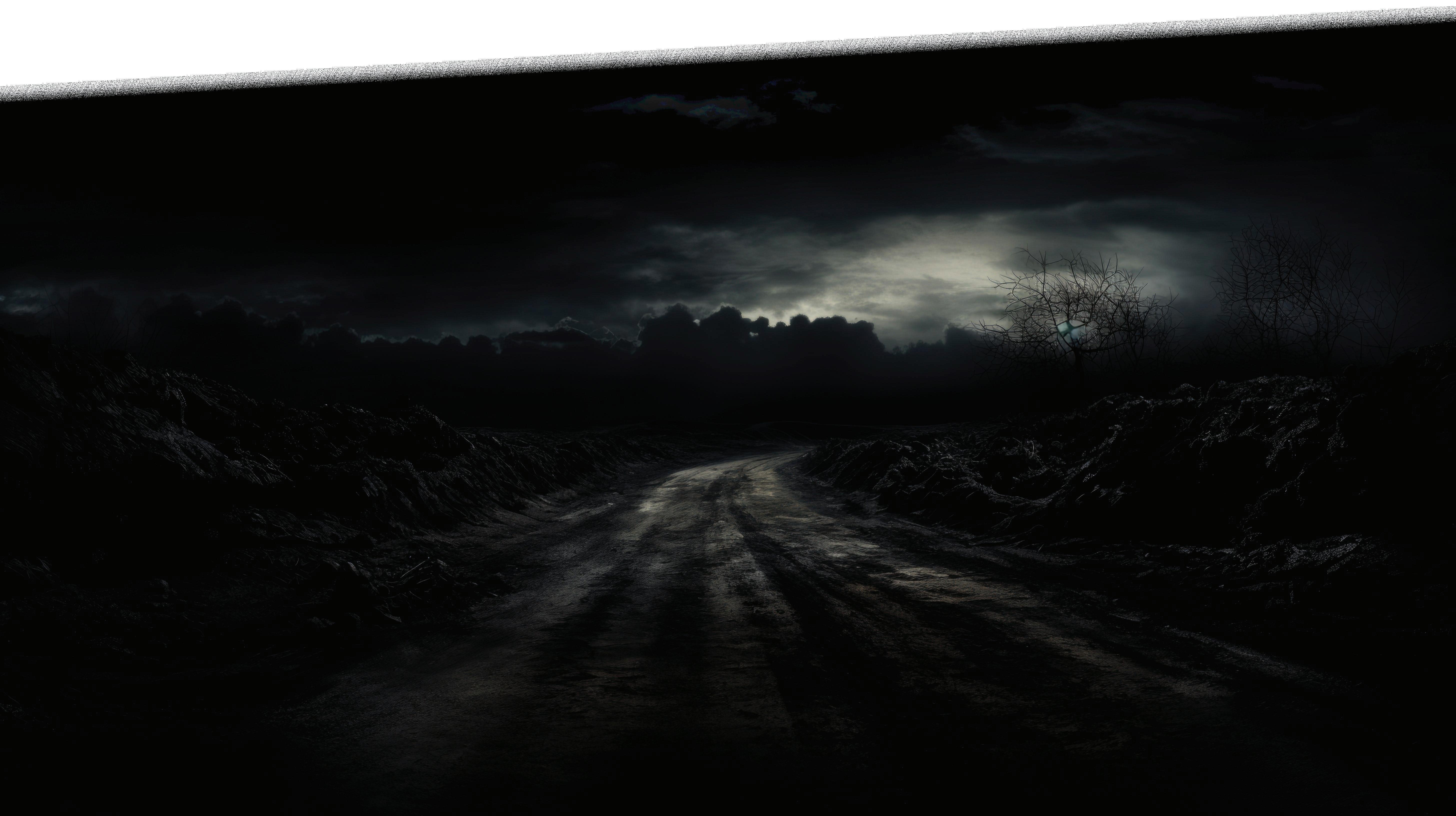


















Address:
Email:
NICOLE Rosie, the former boss of the New Zealand Transport Agency (NZTA), is the new CEO of the National Heavy Vehicle Regulator (NHVR).
In announcing the appointment today, NHVR Chair Duncan Gay said Rosie brings a wealth of knowledge and experience and is looking forward to officially welcoming her to the regulator on June 30.
NHVR Chief Operating Officer Janelle van de Velde had been interim CEO since Sal Petroccitto left the role on January 24 after 10 years in the top job.
“I am pleased to announce Ms Rosie was selected as the new NHVR CEO following an extensive and rigorous recruitment process,” Gay said in a media release.
“With over 20 years of leadership experience in both the public and private sectors, most recently Ms Rosie was the CEO at New Zealand Transport Agency following her role as CEO of WorkSafe New Zealand. Nicole has also held senior executive roles at Fonterra, KiwiRail, Vector, and Toll NZ.
“Ms Rosie’s strong background in governance, law and public policy, combined
with a deep understanding of transport and infrastructure, made her the ideal candidate to lead the NHVR into its next chapter of harmonisation and innovation.”
Gisborne-born Rosie had been at the helm of the NZTA for 4.5 years before leaving in mid-February.
“Leading the NZTA has been a highlight of my more than 20 years in senior management,” Rosie said at the time.
“The team at NZTA is incredibly dedicated to ensuring New Zealand has a land transport system that supports economic prosperity and serves our communities, and I’m proud to have been part of that.
FOUR new smart cameras are now operating on some of Adelaide’s busiest routes, using AI technology that’s the first of its kind for South Australia.
This AI technology has been installed at key locations at Penfield, Paradise and two roads at Old Noarlunga.
The SA Department of Infrastructure and Transport (DIT) says the software is an intelligent solution to improving road safety and traffic flow during peak periods.
The cameras are linked to the DIT’s Traffic Management Centre (TMC), allowing staff to monitor vehicle
movements and automatically adjust traffic signals to reduce congestion.
According to data collected by TMC, traffic congestion costs the state’s economy more than $33,000 for every 5000 motorists that are forced to wait 20 minutes in the morning peak.
DIT revealed that in Adelaide’s northern suburbs, traffic build-up and dangerous rear-end collisions have significantly reduced since the cameras were installed last year.
“Previously, drivers attempting to exit the Northern Expressway onto Heaslip

Road were able to bank up to dangerous levels. In some cases, motorists were forced to queue onto the expressway where several rear-end collisions occurred,” DIT said.
“Following community concern at the site and a subsequent investigation by the Department, the area was flagged as a suitable location to trial the new software and hardware, which was designed and built by engineering company SAFEgroup Automation.
“Since the installation, the cameras have been able to successfully identify and respond to periods of high traffic flow.

“The system, which is con nected to a temporary traffic signal at the Heaslip Road roundabout, is able to stop northbound traffic when activated and generate gaps for the off-ramp traffic to enter the roundabout without cars banking up. The signals continue to operate until the queue length on the exit ramp is reduced.”
There are now plans to install the system at two more locations along the Northern Expressway, in preparation for the nearby housing developments.
“Close to 3000 homes are earmarked for the Smithfield
pressway,
taken a proactive approach in ensuring the surrounding infrastructure is ready for the increased traffic,” added

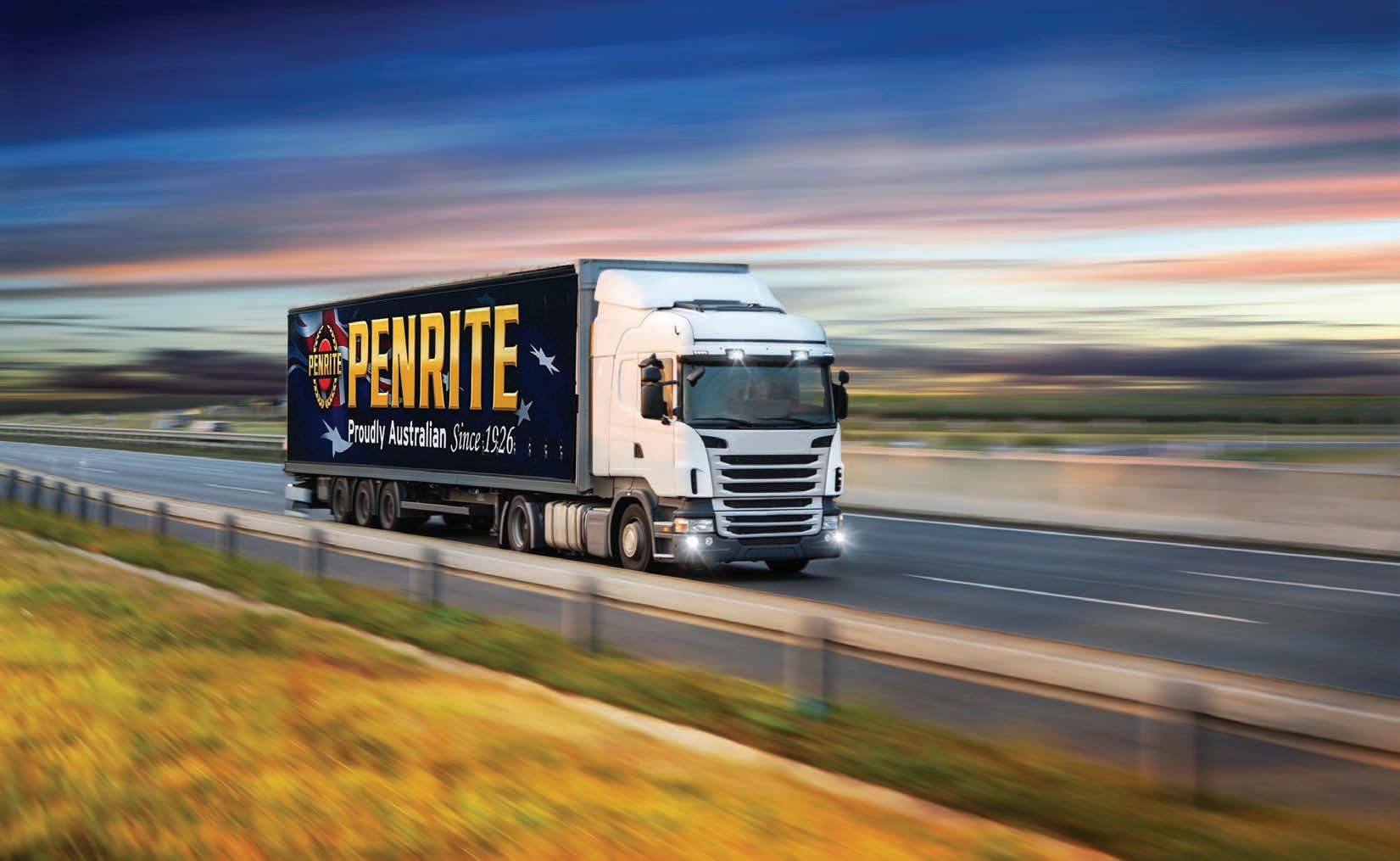


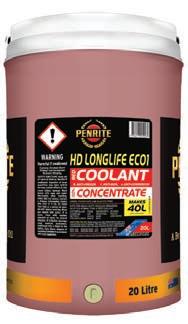










CAM Dumesny had three major items at the top of his federal election wish list: more money for road maintenance, rest areas for truckies and interstate freight resilience.
“We’ll always need upgraded roads, but we need massive investment for road maintenance on our major freight routes – the Goldfields, the Pilbara which are the primary economic engine rooms of the country,” said the CEO of the Western Roads Federation (WRF).
“That’s where Australia makes its money, and the roads are in a tragic state. They need major maintenance, and we need rest areas.”
But with only two sparsely populated federal seats in the region – and little in the way of voter support – Dumesny said that’s where the industry faces an uphill battle.
“Fundamentally, investment follows voters in marginals seats, it doesn’t follow need.
“The federal government has short-changed WA on infrastructure in the federal budget and reduced our forward road funding from $1.4 billion down to $0.9 million.
“It’s all part of the feds’ ‘Make the East Great Again’ [push] – just the usual anti WA bias.”
Dumesny said the biggest challenge for every jurisdiction is maintaining the assets they already have. He again cited the “objectional nature” of putting $1 billion of roading investment in western Melbourne seats at the expense of all other regional areas crying out for funding.
“And where’s any discussion about interstate freight resilience, particularly into WA, western Queensland, the NT
and the western half of South Australia?
“There’s just no focus at all on our need for resilience.”
Dumesny, however, said the Coalition’s pre-election pledge to reinstate the 80:20 funding commitment with states should help motivate jurisdictions to take action.
“An 80:20 funding arrangement helps get those regional seats in safe electorates that normally miss out some degree of investment in roads.”
Dumesny said he also supports the campaign being led by the Livestock and Rural Transporter Association of WA which backs the Coalition’s pledge to reinstate live sheep exports if successful at the polls on May 3.
“The point that people miss is that it’s not just about the live sheep exports, it’s about the ongoing destruction of our rural and regional communities and the economics that underpin them.
“Whether it’s taking out live sheep export or forestry, it’s singularly to appease inner-city voters and gut and destroy the economies and social fabric of our regional communities.
“What’s next? Do they want to stop rice growing in the Murray irrigation area of New South Wales?
“Do they want to stop cotton farming in southern Queensland? It just goes on. Our rural economies need an economy and when you take away an economy you take away the things that earn –banks, chemists, shops – and that just kills off the community.”
In its election campaign initiatives, the Australian Trucking Association (ATA)


next government should develop minimum national service and maintenance standards for the National Land Transport Network.
“As well as building new roads, governments need to maintain our existing roads better – and they’re in poor shape,” Parry said. “The next government should impose minimum service and maintenance standards for key freight roads and reallocate funding to ensure they meet those standards.”
The ATA also called for funding for eight critical road projects across Australia to reduce the cost of living.
“The Australian Government will spend more than $120 billion on land transport infrastructure over 10 years, but those investments need to be targeted at projects to help us move Australia’s freight at lower cost,” Parry said.
“In New South Wales, for example, we are calling on the next government to upgrade
You’ve invested in a quality truck, so accept nothing less than Armoury Stainless and Wheels for an iconic look that lasts the journey.
With stainless workshops in Sydney and Melbourne, we proudly service dealers Australia wide.
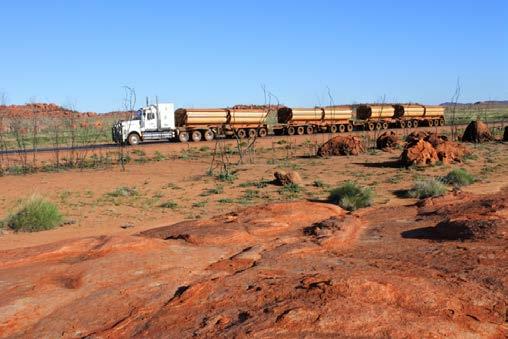

allow as of right access to the Hume Highway for 36.5 metre A-doubles.
“Switching from conventional semitrailers to A-doubles would enable us to move the same amount of freight in half the number of trips, while using just 72 per cent of the fuel.”
In South Australia, Parry said the feds need to fund the Greater Adelaide Bypass to a standard that would allow high productivity trucks to bypass the Adelaide Hills at the open road speed limit.
He said the Australian Government should cover 80 per cent of the project’s cost.
“The critical road project in the NT is for the government to comprehensively address the flood immunity of the Stuart Highway. The Stuart Highway is an essential link between the Northern Territory and southern Australia; flooding results in food shortages across the territory.”
Parry said the next gov-



ernment should develop a istance-based road user charging system for electric vehicles, to ensure the owners of these vehicles pay a fair share of the cost of building and maintaining our roads.
“In the Vanderstock case, the High Court held that imposing road user charges on electric vehicles was an Australian Government responsibility. The ATA was a party in this case. We wanted to make sure that national trucking businesses didn’t end up paying electric vehicle charges at eight different rates under eight different payment systems. The next government should develop a new road user charging system for the electric vehicles, to come into force for electric light vehicles once they make up 30 per cent of light vehicle sales, and then for electric heavy vehicles once they reach 30 per cent of heavy vehicle sales,” he said.
ATA’s critical projects
NSW: Upgrade the Sheahan Bridge on the Hume Highway at Gundagai and extend
Victoria: Maintain the Australian Government’s contribution to the non-tolled components of North East Link. The project will complete Melbourne’s orbital system, improve access and reduce travel times.
Queensland: Upgrade the Inland Freight Route to establish an alternative to the Bruce Highway between Mungindi and Charters Towers. Replace the westbound Bremer River Bridge on the Warrego Highway near Ipswich. The westbound bridge was built in 1958 and has cracks in its steel girders.
SA: Build the Greater Adelaide Bypass to a standard that would allow trucks to bypass the Adelaide Hills at the open road speed limit. The Australian Government should cover 80 per cent of the cost of the bypass.
Tasmania: Complete the duplication of the Bass Highway between Launceston and Devonport.
NT: Comprehensively address the flood immunity of the Stuart Highway. The Stuart Highway is an essential link between the Northern Territory and southern Australia; flooding results in food shortages across the territory.






THE Coalition has revealed its plan to deliver an $840 million Greater Adelaide Freight Bypass, to help remove heavy vehicles from congested suburban streets – if elected on May 3.
Nicolle Flint, the Liberal candidate for Boothby, said that the bypass would take trucks off Cross Road and “get trucks out of our hills and out of suburbs”.
“We are the only state without a freight bypass,” Flint said. “So, this brings us up to the standard of every other capital city and I could not be more excited. We want people to be safer, we want our truckies to be able to get all of their goods to market sooner.”
Opposition Leader Peter Dutton said this is something he has been working on for over a decade. He says the $840 million pledge to build this bypass would take trucks out of suburbs.
“It provides a safety corridor and it provides something that every other state takes for granted,” Dutton said.
“We can’t have trucks coming down through one of the most dangerous intersections and road corridors in our country and pretend that nothing is to

be done about it.
“The Prime Minister came to Adelaide and he promised 50 per cent funding for this project. That meant that the South Australian Government wasn’t going to go ahead with this project because their argument is that it should have been 8020 like other jurisdictions have had.”
Former state and federal governments had previously committed to the project and stage one of a Truro bypass, which
was scheduled to begin in late 2023. However, the project was axed only nine months before works were due to commence.
Then last month, the federal government announced $525 million over 10 years for the High Productivity Vehicle Network (HPVN) as part of the 2025-2026 Federal Budget.
The HPVN would deliver upgrades between the South Eastern Freeway and Sturt
Highway such as the duplication of the Swanport Bridge and Murray Bridge Township Bypass in Monarto.
Dutton explained, “Our announcement means that a Commonwealth Government will contribute 80 per cent of the cost of this project and that will mean that the South Australian State Government has money spare to spend on other road projects.
“Our plan is to get this bypass built, the money is on the table now, it starts this year and we can work closely with the South Australian Government to see this come to fruition.”
The City of Burnside has previously shown its support for the Greater Adelaide Freight Bypass, with its CEO Chris Cowley and Mayor Anne Monceaux lobbying for funding to be reinstated.
The council says it is in favour of a reduction in the volume of heavy vehicles on Portrush and Glen Osmond Roads via the bypass, which it said would also increase freight productivity, reduce damage and injuries as a result of traffic collisions, improve traffic flow, and reduce noise and pollution.
Recently, the City of Nor-


wood Payneham and St Peters e Adelaide Freight Bypass. In a release last month, the council said it “is concerned about the safety of all road users due to the ever-increasing number of large freight vehicles using the South-Eastern Freeway and subsequently, Portrush, Glen Osmond and Cross Roads.”
The council would like to see the bypass come to fruition to reduce the volume of heavy vehicles on Portrush and Glen Osmond Roads.
“The council also supports calls for the reinstatement of Federal funding to develop the GAFB, including the Truro Bypass project, to achieve national productivity goals.
“Implementation of the GAFB would also form an important part of creating a High Productivity Vehicle Network (HPVN) across South Austra-
lia, which seeks to maximise lia’s freight network and improve interstate supply chain connectivity.”
South Australian Road Transport Association Executive Officer Steve Shearer said there’s a “real concern” that none of freight bypass projects will happen unless there is an 80:20 funding arrangement with the state.
“There is no way known that the road as it is now, let alone an intersection onto the Sturt Highway, could handle one high productivity vehicle per minute extra,” Shearer said.
“The road has to be reconstructed adequately to enable us to get that sort of volume, or even half of that, onto that route safely.
“If the money’s not provided, they’re not going to get that outcome.”





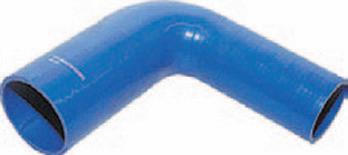




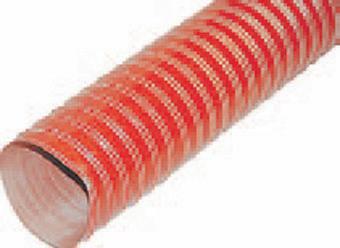





PETER Dutton’s pledge to halve the fuel excise for 12 months if the Coalition wins on May 3 has triggered renewed concern and backlash from Australia’s trucking industry.
Many fear a repeat of the devastating financial fallout experienced under the Morrison Government in 2022.
The Opposition Leader’s budget-reply announcement, pitched as a cost-of-living relief measure, would see the fuel excise slashed from 50.8 cents per litre (cpl) to 25.4 cpl. However, under the proposal, the fuel tax credit (FTC) – a critical mechanism used by heavy vehicle operators to manage business cash flow –would then be abolished for
the duration of the cut.
At present, operators receive a FTC of 20.3 cpl, being the difference between the fuel excise of 50.8 cpl and the road user charge (FTC) of 30.5. If the RUC is more than the excise, the operator receives no rebate.
While this may appear as a win for the average motorist at the bowser, South Australian Road Transport Association (SARTA) Executive Officer Steve Shearer said it will create a damaging cash crisis for trucking businesses, especially the small-to-medium family-run operations that make up over 80 per cent of the industry.
Shearer said SARTA has discussed the Dutton an-
nouncement in detail with several Coalition MPs, including shadow ministers, and has made it clear that the vague assurances that Dutton would consult with the industry about the proposed 50 per cent fuel excise cut don’t go far enough.
“We are not prepared to risk the election of a Coalition government that has not committed unequivocally to ensure that the road freight sector is not harmed, as we were under Morrison’s debacle,” Shearer told SARTA members in a recent bulletin.
“Statements that road freight will “benefit too” are meaningless because the spin merchants will argue that the minor reduction in the Road
User Charge (RUC) is somehow a benefit, which is utter misleading nonsense.”
Shearer said any thought the officials and Coalition decision-makers may have that the reduction in fuel prices by 25.4 cpl will cover the operators’ loss of the 20.3 cpl FTC is absurd.
“It shows a complete lack of understanding that the customer base will mercilessly demand the fuel price cut be fully passed on.”
Shearer said the opinions of large corporate operators, which Treasury and other officials occasionally seek, are largely irrelevant.
“Large corporate operators operate in a different economic and commercial world from

that which the massive bulk of the industry, upon which they rely heavily, operates in.”

Shearer said there are only two options for an incom ing Coalition government to avoid causing extensive economic harm to the truck ing industry which will flow through to the broader economy.
The first is to reduce the RUC by the same amount (25.4 cpl) as the fuel excise, a call echoed by a number of other peak bodies.
“This is the only option that guarantees the 50 per cent cut in excise will be passed on to the customer, and hence the community.”
The other option is to legislate to stop customers taking the 25.4 cut in excise but the downside is that the customers and the community would not receive the benefit of the 50 per cut in excise.
“Whilst some operators may be able to increase their freight rates to recoup the lost FTC, they will be few and far between,” Shearer said.
THE next Australian Government should provide financial support to apprentice and trainee truck drivers and their employers, said Australian Trucking Association (ATA) Chair Mark Parry.
“We deliver every item at your local supermarket, every litre of fuel at the service sta-
tion, and every medicine at the chemist, but we face a shortage of truck drivers,” Parry said. Parry criticised the lack of federal support for aspiring drivers, noting that while apprentices in other priority occupations such as mechanics and electricians receive assistance, those entering the
trucking profession do not.
The ATA is calling for a $5000 support payment to truck driving apprentices, with their employers receiving $2000 after six months and a further $3000 after 12 months of the apprenticeship.
Parry also highlighted the value of shorter, skills-based
training programs offered by registered training organisations.
These programs, which go beyond simply obtaining a licence, equip drivers with additional skills needed to succeed in the industry. Without federal incentives, many potential drivers overlook them.
SYDNEY
510 Victoria Street, Wetherill Park NSW 2164 Ph. 02 9756 6199, email: isri@isri.com.au, www.isri.com.au
BRISBANE
“The next government should introduce a $1500 completion bonus for drivers who finish one of these short courses,” Parry said.
“Their first employer should also receive a $1500 hiring bonus.”
The ATA also wants a national skills passport for drivers in-
troduced which the association said would simplify the hiring process and give businesses greater confidence.
Parry also wants to see articulated and tanker truck drivers added to Australia’s skilled occupation list, making it easier for qualified overseas drivers to migrate and work in Australia.


3/120 Gardens Drive, Willawong QLD 4110 Ph. 07 3275 2044, email: sales@isribrisbane.com.au, www.isribrisbane.com.au
BRISBANE NORTH
1/259 Cullen Av, Eagle Farm QLD 4009 Ph 1300 11 4774, email: seats@isrinb.com.au, www.isrinb.com.au
MELBOURNE
Unit 1/569 Somerville Rd, Sunshine West VIC, 3020 Ph. 03 9311 5544, email: sales@isrisunshine.com.au, www.isri.com.au
MACKAY
110 – 120 Maggiolo Drive, Paget QLD 4740 Ph. 07 4952 1844, email: admin@isrimky.com.au, www.isriseatsmackay.com.au
PERTH
408 Welshpool Rd, Welshpool WA 6106 Ph. 08 9362 6800, email: info@mmtisri.com.au, www.mmtisri.com.au
DARWIN
Mobile Sales and Service
Ph. 08 8927 0986, email: info@isridarwin.com.au, www.isridarwin.com.au
NEWCASTLE/HUNTER VALLEY
Ph 02 4932 0600,
Unit 2/13 Hinkler Ave, Rutherford NSW 2320 email: sales@hvss.com.au www.isri.com.au

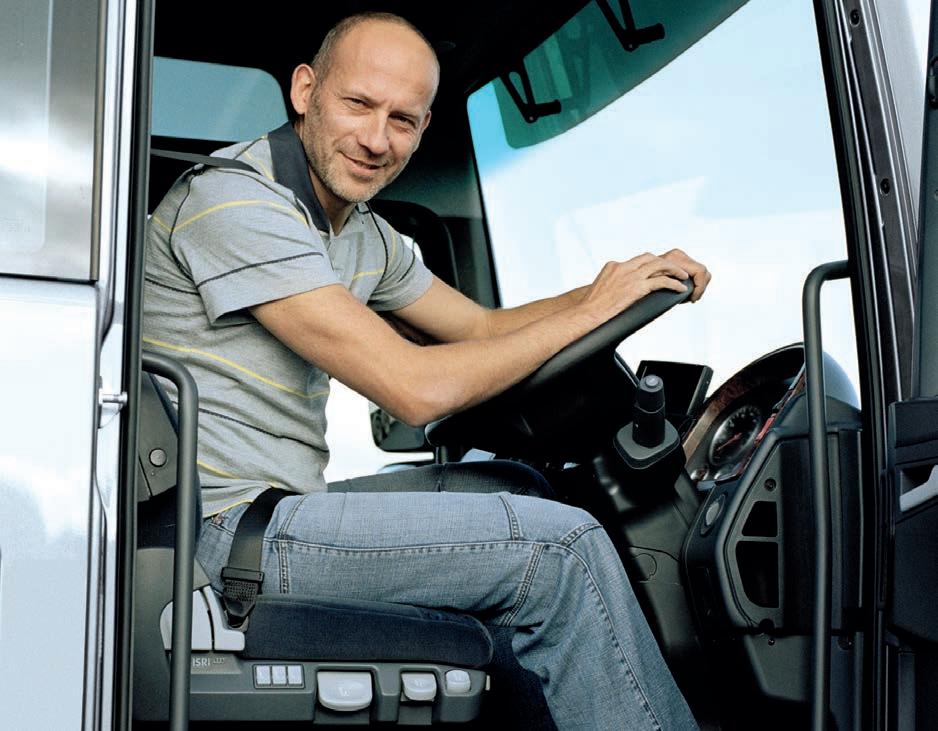




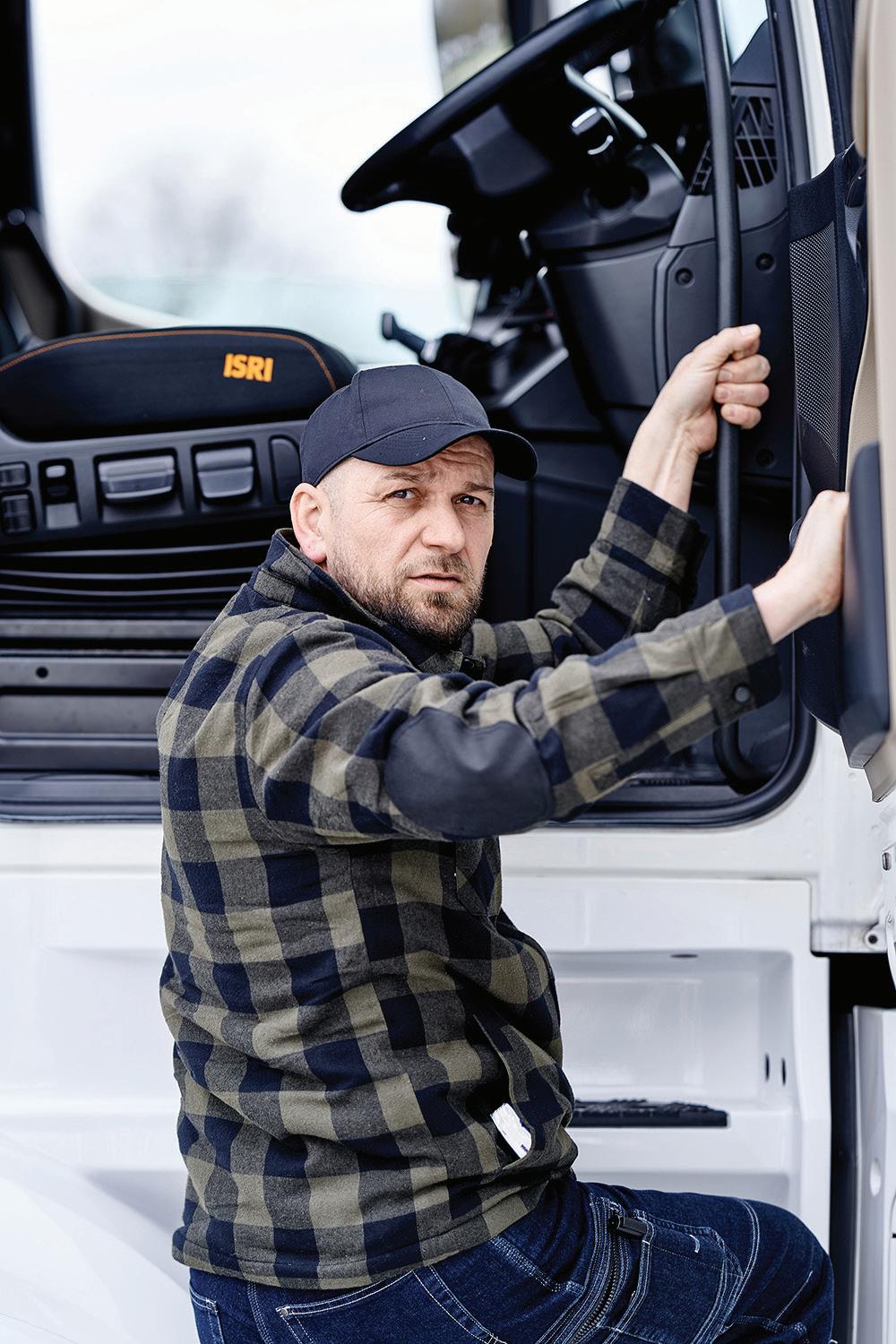


BY TOM PAUSIC
THE 9th of April, 2025, will forever remain the most heartbreaking day in the 14-year history of Auswide Transport Solutions.
On this day, we lost one of our own – Harnoor. A valued colleague, a devoted family man, a beloved son, and a dear friend. Just minutes from completing his journey, Harnoor’s life was tragically cut short in an incident that has shaken us all to our core.
Initial reports suggesting a collision between two prime movers were incorrect. We want to clarify that the incident involved trailers from a third-party vehicle that became uncoupled and veered
directly into the path of Harnoor’s truck.
Our team spent the day alongside authorities at the scene, working closely to understand the circumstances.
W hile we, like the investigators, may have our own developing understanding throughout the crash scene investigation, we fully respect that this remains an active investigation.
Out of respect for the official process and the privacy of all families involved, we will not be providing further details at this time.
Consistent with our company’s cultural values, we remain compassionate for all involved.
We are cooperating fully
with the relevant authorities and remain committed to supporting a thorough and transparent investigation.
The safety and wellbeing of our people, partners, and the community has always been – and remains – our highest priority.
We would also like to extend our deepest gratitude to the first responders, recovery personnel, and all those who assisted at the scene.
In particular, we wish to acknowledge the heavy vehicle driver who was first to arrive. Your courage and selfless decision to assist in such a traumatic moment speaks volumes for you and your company, and we thank you sincerely.
Harnoor may not have
been widely known across the broader transport industry, but to those of us who had the privilege to know him – his family, his friends, and his colleagues – he meant everything. He was kind, compassionate, hardworking, humble, and deeply loved. His presence will be missed beyond measure, and his memory will live on in the hearts of all who knew him.
What has added to the pain of this loss is the deeply upsetting commentary that has surfaced on social media. At a time when compassion and empathy should be paramount, it is disheartening to witness callousness to such a compassionate and humble person in the face of such
a profound tragedy. We understand the scrutiny that can come with operating in the public eye, and we accept it. But to those who have responded with mockery, cruelty and hatred – we urge you to seriously reflect.
A beautiful young life has been lost and a family is grieving. There is no place for hate in moments like this.
We stand beside Harnoor’s loved ones in mourning, and we ask others to join us – in kindness, in compassion, and in respect. In Hanoor’s memory, we seek social and social-legal change.
• Tom Pausic is the Chief Executive Officer at Auswide Transport Solutions.

A group of leading trucking associations from around Australia have joined forces in response to the “concern ing prevalence of racism” within the road freight and transport industry.
In a joint media release, leaders of the Western Roads Federation, Queensland Trucking Association, Victo rian Transport Association, NT Road Transport Associ ation, Tasmanian Transport
A ssociation and the National Road Freighters Association called for an “immediate and collective acknowledgment of this critical issue”.
“Recent tragic events, in cluding the death of a migrant driver – who was mourned by his community yet unjustly disparaged by others online – highlight the urgency for us to confront and eradicate the toxic behaviours that not only endanger lives but also tarnish the reputation of our industry,” the group said.

both large and small, rely on migrant labour pools, which are essential for the operation and growth of our industry.
Migrants come to Australia seeking better lives for hemselves and their families, bringing valuable skills and diverse experiences that contribute significantly to our orkforce and stimulate local economies, they said.
“As we face a significant shortage of skilled drivers, it is essential to recognise that migrant labour is critical for filling key roles within the road freight sector.
“Promoting an inclusive and respectful workplace culture will not only help attract talent but also ensure that we can effectively deliver freight capabilities both now and in the future.
“As an industry, we all desire improved safety standards and a greater emphasis on on-road driver training programs that provide much-needed practical driving experience. It is our collective responsibility to create a safe environment for all drivers, ensuring a workplace free from harassment and discrimination.”
“It is time to openly call out racism. Every individual in our industry must reflect on their own behaviour and treatment of others. Equity is not merely an ideal; it is a fundamental right that all individuals living and working in Australia deserve.
bedrock of the Australian culture.”
“Tolerating any form of racism directly contradicts the values of respect, equality, and mateship that form the
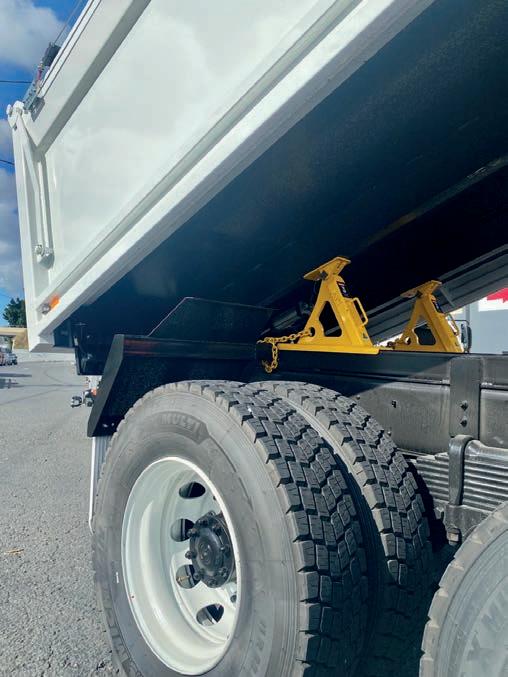

“This spirit is crucial within our industry, where collaboration and teamwork can make the difference between success and failure.”
The associations also pointed out that many employers,
The associations also said that the culture of mateship between drivers on the road embodies looking out for one another, supporting each other through thick and thin, and demonstrating patience and tolerance toward our differences.
“Without actively welcoming and supporting migrant orkers, our industry will struggle to meet the increasing demand for freight services in Australia. Projections indicate that the freight task will grow considerably over the next 20 years, necessitating a robust and diverse workforce that can meet these rising demands.”
Industry reports consistently show that this labour source cannot be overlooked, they added.

While the associations commended those who are already taking positive steps, they urged all stakeholders –industry leaders, government representatives, all drivers and workers alike – to stand against racism and commit to continuous improvement.
“Together, we can cultivate a road freight sector that values every individual’s contribution and upholds the principles of mateship, respect, safety, and equity.”



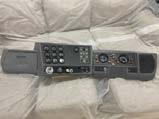



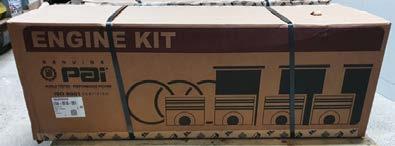
IT was supposed to be one of the answers to Melbourne residents’ pollution issues caused by older trucks that regularly travelled through the inner west to the Port of Melbourne.
The Victorian Government’s $20 million Clean Air for the Inner West program offered $5 million for grants available to councils to seal local roads and reduce dust pollution, and a further $15 million to truckies to trade in their older, pre-Euro 4 trucks for up to $20,000 in cash.
Three local councils were awarded $5 million for resealing works, but more than 18 months after the program kicked off, not a cent of the
$15 million for truck trade-ins has been spent, confirmed the Department of Transport and Planning to Big Rigs
The first round of applications for modernising the truck fleet was open for just three months in 2023, with two applications received and assessed.
“Neither of these applications satisfied the criteria, and no grants were awarded. No funds for modernising the truck fleet have been spent,” a department spokesperson told Big Rigs
To be eligible for a share of the grant, the truck owners had to operate in Melbourne’s inner-west at least once a week, and undertaken port-related
transport movements, in the previous six months.
A second round of funding was promised in 2024, but didn’t eventuate.
“Given the low uptake, we are currently reviewing our approach to support the industry to transition to newer, cleaner, lower-emissions trucks to access the Port of Melbourne.
“There has been no decision to end the program.”
In a Facebook post to his followers, Maribyrnong Truck Action Group (MTAG) President Martin Wurt expressed his disappointment that the program failed to get the desired result.
He said MTAG raised con-
cerns that $20,000 was too low to be an effective incentive when this scheme was first announced, but welcomed it anyway, happy that something was finally being done about “old polluting trucks”.
“It is so disappointing that a program, aimed at helping both truck drivers and inner west residents, has achieved nothing, absolutely nothing. Not one old polluting truck has been removed from our streets,” Wurt posted.
“It is also infuriating that “government spokespersons” have responded to our filtration campaign with statements on how they are upgrading old trucks. This is

“If effective action was actually taken on old trucks we would be less concerned about the Westgate Tunnel’s
OVERALL numbers may have dipped slightly on last year’s record start to the year, but Isuzu had plenty to celebrate when the latest truck sales were tallied for the first quarter of 2025.
According to Truck Industry Council’s (TIC) records, Isuzu notched 1107 deliveries for March, boosting its year-to-date (YTD) overall market share to 28 per cent, up 2 per cent on the same YTD total last year. Isuzu, which officially
launched its 2025 range this month, also muscled its way into second spot overall in the heavy-duty sector with 249 units rolling out the dealership gates in March. That puts the Japanese powerhouse, the number one badge in Australia for the last 36 consecutive years, 20 clear of Volvo in the YTD race for second – 589 versus 569 – with Kenworth already taking a firm grip on the top spot.
Kenworth recorded 302
deliveries in March and now has a YTD total of 766, or a 22.7 per cent market share, up from 18.5 per cent for the first quarter of 2024.
Overall, TIC said 4125 new trucks and vans were sold during the month, marking a 4.9 per cent decrease compared to March 2024.
Despite this year-overyear decline, the cumulative first-quarter sales totalled 10,356 units, positioning it as the third-best performance on record for an
opening quarter. Given the potential financial market volatility that the industry has historically seen in a federal election year, TIC CEO Tony McMullan said the current heavy vehicle market’s strength and resilience is pleasing to note.
Overall, the heavy-duty segment experienced the biggest dip in March with a total of 1363 units delivered, down noticeably, 11.1 per cent (or 170 trucks), on March, 2024.
The first quarter result is marginally better, still in negative territory though, with 3380 heavy sales YTD, representing just a 10.8 per cent decline (-408 trucks) over quarter one 2024 sales.
The medium-duty segment posted solid sales in 2024, however the segment is down like all others in 2025. The March 2025 result saw total sales of 623 medium trucks, down 4.6 per cent, (-30 units), on March 2024.
At the end of quarter one a
total of 1664 medium duty trucks have been delivered, that is down by 4.4 per cent (-77 trucks) over the 2024 tally.
Light-duty truck sales saw record sales in 2023, fading slightly in 2024. Those slowing sales in 2024 have carried through into 2025 with new sales shrinking a little more in quarter one with 1177 trucks delivered for the month, down 7.4 per cent (-94 trucks) over March 2024.



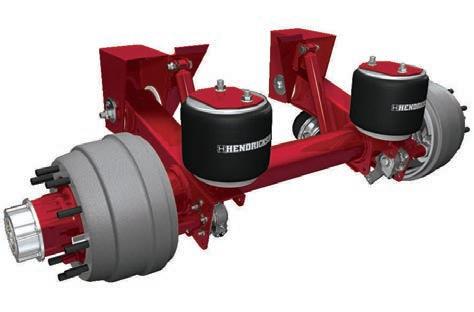




EDITOR JAMES GRAHAM

It was simply out of respect for his grieving family and the company who supplied us with the story. For the same reasons, I’m not going to elaborate much more than that, other than to remind some that our Facebook page isn’t an open forum for prejudice and hate and we have zero tolerance for it.
What sort of message does this kind of language send young teens or their parents who might be curious about a career in trucking? We get that many of you are frustrated and upset by the drivers you encounter that don’t make you feel safe.
The licensing system is broken, no question. But instead of hijacking someone’s moment of grief, why not put that same energy into lobbying your MP, or joining an industry association.
Like it or not, that’s the only way you’ll effect positive change.

I’VE been in the industry now for 27 years. I’ve lost a couple of mates, and a son-in-law to this industry. The last 5-6 years have been the worst I’ve ever seen! Not only because of the international drivers, but also the home-grown; 5-6 years in the job thinking that they know the LOT! The latter are what’s fuelling the racism in this industry. We are supposed to be professionals in what we do! I’ve worked with many ‘internationals’ and had quite a few that were extremely good at their job and also very good
mates. Yes, there may be more trucks on the road nowadays, but the licensing requirements also got harder. So, how do some of these blokes, (Aussies) included get their licence?
Why do 30-plus year-olds need to act like two-yearolds on the UHF? No matter how long we’ve been on the road, no matter how much we ‘think’ we know, we can be certain that there is much more to learn.
The old timers worked this out well before these ‘new age’ drivers. A huge percentage of these ‘new age’ drivers have
seen how it was back then (probably streamed it on YouTube) And try to live it out on the highway and get it so wrong!
AS a DG driver for more than 25 years, the DG rules have been taken for granted for too long.
WorkSafe in all parts of Australia have dropped the ball. In the last few years, I have seen drivers and bosses overlook the safety rules.
2018 Kenworth T610SAR Prime Mover XN76RO 6F5000000JA461944
2021 Kenworth T610SAR Prime Mover XN45ZQ 6F5000000MA470098
In saying this, we have these ‘new age cocks’ that don’t care whether it’s an Aussie or otherwise and would rather just record it on their phone and post it to multiple sites instead of getting out off their ‘throne’ and helping, teaching, showing a better sometimes easier way. We, as ‘professionals’ need to step up. Start helping the new guys: brown, yellow, black, grey. And whatever colour you want. Don’t just sit back making a TikTok about it – go and give a hand.
2017 Kenworth T610SAR Prime Mover CM49ZG or XN44XS 6F5000000HA458787
We helped each other. Something that never happens now, and if it does, it’s a 60-70-yearold bloke pulling up and fixing the issue. No matter the nationality. With no thanks, no Facebook posts saying how awesome they were because they just stopped to ask if they had enough water. As ‘professionals’ we should be helping, teaching others, no matter their nationality.
Slattery Asset Recovery in conjunction with an equipment financier are offering a reward program for several Trucks and trailers. A reward of $10,000 per Truck or Trailer combination is offered for specific information leading to the location and successful recovery of the below equipment. The equipment was held by Xpress Group Australia Pty Ltd (In Liquidation) and has been reported as stolen with the NSW Police with last known location 50 Victor Avenue, Kemps Creek, NSW, 2178.
If you have relevant information, please contact the below number or email address. Leave a message with your full name and best contact number. Information will be treated as confidential. Anonymous phone calls will not be followed up. Specific details must be provided to receive a reward should your information lead to a successful recovery of equipment.
Darren Moore
Until someone stands up this will keep happening.
There was a time the DG driver was the cream of crop as they could read safety rules for DG and driving and one would need to have faultless
$10,000 REWARD ALREADY PAID
driving experience. We were respected by emergency services. But now we are looked upon as just another road user.
I would have to say this shows the misunderstanding that officers have not just for DG, but also for OS trucks and risk work we all do. Also, maybe we need to stop looking at ways to raise money and review the whole DG rules and education.
Robbo Prentice


CM49ZG or
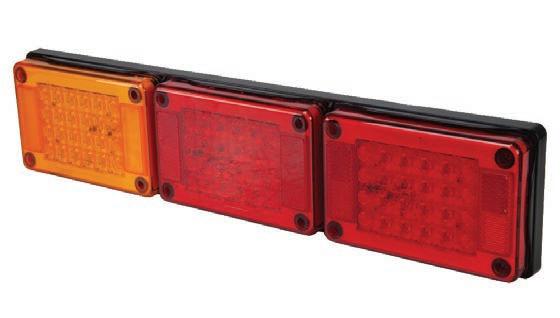
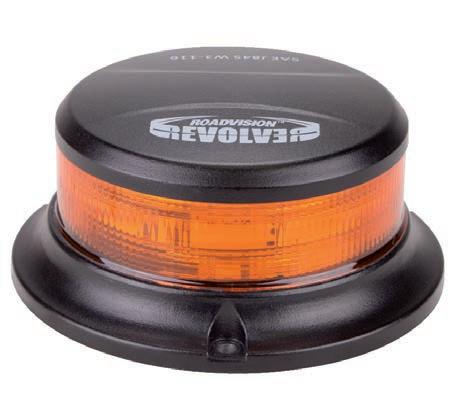

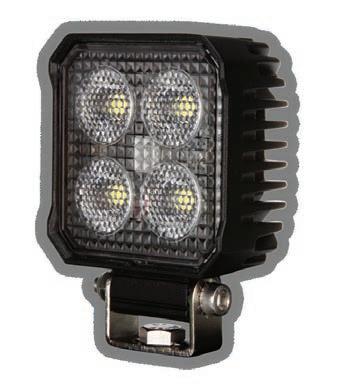

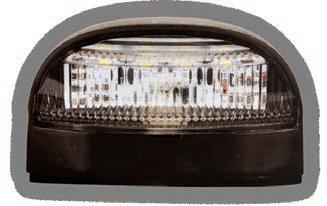
BY JAMES GRAHAM
BEAUDESERT hay run hero
Kris Jennings still can’t quite comprehend how quickly his life has changed in the space of two weeks.
One minute the Queensland truckie was watching the harrowing TV news footage of the flood devastation in the state’s south-west that inspired him into action, the next he’d become an unwitting social media hero.
His impassioned Facebook clips sharing his early frustrations at being blocked by supposed fire ant red tape and a charity telling him no hay was needed, resonated all the way up to Premier David Crisafulli’s office – and triggered an outpouring of support.
The boss of Jennings Bulk Haulage, and his growing band of helpers, made the first hay drops into the flood-stricken Quilpie region earlier this month with more than 1300 bales.
With the help of NQ Flying Fuels, he also organised $90,000 worth of donated fuel – via $530 drums – to be dropped on to remote farms.
After a breather to spend time with wife Lee and daughter Lucy, 11, Jennings is heading back into Quilpie and Thargomindah again with even more fodder on May 3.
“If anyone wants to be a part of it, just reach out to us,” Jennings told Big Rigs “Even if you just want to tow

a single. Everyone just get on board, no matter what it is.
Just send me a text or message to my business [Facebook] page.”
Jennings said the communities in the flood-ravaged areas need just as much help now as they did at the start.
“The government has left Quilpie area now and the choppers have stopped and these guys feel alone.
“They’ve got a big road ahead of them.”
Moved by the ongoing challenges he’s seen firsthand, Jennings is now hoping to start a charity to formalise his
commitment to helping the bush communities get back on their feet.
“I’ve really got a passion for this now,” said Jennings, who also put $3000 on the bar one night to show his appreciation for all those who rallied to his cause.
“There are enough good people in this country that we could do this, the way we are, and I’ll run it for free - some charities are paying singles $4.20 a kilometre, either way. No one makes that in the real world.
“I’m just doing what’s right. If you added up all the hay,
all the chopper fuel and all the trucks that didn’t get paid for the last week, we’ve probably blown through a million bucks ourselves – and no one’s taken a cent.”
Jennings said one of the biggest lessons he’s learned in the last fortnight is that the media doesn’t seem to care about the Australian bush.
He’s now hoping his campaign will catch the attention of mainstream TV media outlets like 60 Minutes to help raise broader awareness of the communities’ plight.
“I really think this whole thing needs exposure – peo-

ple don’t even know about what’s going on there right now.
“I’ll get an airplane and we’ll go see some farmers. Until you get up in the air, you can’t fathom how catastrophic this was.
“And these guys had no chance. They got told they would have 300mm, they got 600mm and it rained for five days. That’s why they couldn’t get in the air to save cattle.”
The big-hearted truckie has also put the call out for furniture, fridge van and food donations from the respective majors and already got a call back from Nolan’s Interstate Transport putting their hand up to help.
“I don’t want to step on any toes. I just want to get out everywhere that’s gone under water and not got power.”
Jennings also paid tribute to his staff at Jennings Bulk Haulage for affording him the time to step away the 11-truck fleet and do what he can to help.
“We’ve got beautiful staff. I can step away at any given time and those boys just keep the show going for me.”
Although looking forward to a break with his family when Big Rigs caught up with him on the road, a fired-up Jennings said as long as there is hay to cart, he won’t stop.
“This has been the hardest moment in my life – I’ve cried, I’ve seen Lifeline sitting there talking to people in towns, it’s very emotional.
“But aside from marrying my wife and seeing my daughter come into the world, this has also been the proudest moment in my life.”
VOLVO Group Australia has announced it will take over all eight existing branches and all service centres of this decades-old WA business.
Effective July 1, 2025, Truck Centre Western Australia will become a business entity under the Volvo Group Australia banner.
Founded by Max Winkless, Truck Centre Western Australia operates across the entire state.
Winkless is credited with being “The Father of Volvo” in Australia, bringing the first
Volvo trucks into the country in 1965 and establishing Volvo as a local entity in its own right.
Operating from its Forrestfield headquarters in Perth’s industrial South East, Truck Centre Western Australia has branches across regional WA stretching from Albany in the south to Port Hedland in the heart of the Pilbara.
Truck Centre Western Australia’s identity will remain intact. The workforce of over 300 people is also expected to transition with the ownership
of the business.
“This is an exciting time for both Truck Centre Western Australia and Volvo Group Australia,” said Martin Merrick, President and CEO of Volvo Group Australia.
“To be able invest in a business that has played such a pivotal role in Volvo Group’s success in Australia is a fantastic opportunity.”
Merrick continued, “It also gives us the chance to go some small way towards repaying the enormous debt of gratitude we owe Max and his team for
laying the foundations of what has become Volvo Group Australia all those years ago.
“Western Australia is a key market for Volvo Group Australia and the team at Truck Centre Western Australia have done a fantastic job at building our brands across the region.
“I’d like to thank the Winkless family and Truck Centre Western Australia staff past and present for their efforts and we look forward to welcoming them into the Volvo Group Australia fold.”

AFTER many months of searching, Sam Hughes –better known as The Travelling Jackaroo – has bought the truck he’ll use to haul his upcoming mobile museum across the country.
For those who haven’t followed Sam’s story, he completed a three and half year charity run last August, travelling 27,250 kilometres across Australia in a 1957 model Chamberlain tractor. He also raised over $260,000 for his three chosen charities along the way.
Now, alongside working full time for Queensland towing company Clayton’s Towing, Sam is in the process of building a mobile museum.
He first told Big Rigs of his plans for this project over a year ago, when he said, “The museum will focus on the Aussie battlers – on the people who built the country including our truckies and the transport industry.
There was just one issue, he hadn’t yet found the right truck. But yesterday he updated his 276,000 Facebook followers with a big announcement – that the search was finally over.
“I’ve found my truck, (third times the charm),” Sam said.
“Introducing my lil Scania 113. Now she’s a bit new for my taste at only 30 years of age and not the most Aussie truck out there but I had to take a step back and make
a few realisations in the last few weeks which led me to take her home.”
He continued, “I’m not planning on moving mountains, and a single drive is a hell of a lot cheaper to rego and run than a bogey drive, only limitations being on getting bogged a bit easier and having a limit of 9 tonne on the back axle but that’s ok for me.
“My back’s pretty shot and unlike a lot of older trucks this ole girl’s very comfortable to drive.”
Sam said that at $15,000, the Scania 113 also fell within his budget. He’s since been getting parts to get the truck in tip top shape. He said that the truck had
already had a full out of chas sis rebuild and is in very tidy shape, but added, “There’s a few things I’ve gotta do still including a bullbar and doing her up in my livery to make her stand out a bit more but I’m happy. Once we’ve gone through her and gotten rego then I’ll be bringing home the museum trailer to begin work on it.
“I think I’ll be selling the single axle dropdeck that I got with it to upgrade to a bogey one for a bit more ca pacity and then should have a very capable lil unit for my adventures!”
In February, Sam also re vealed he’d purchased a 10.5 metre trailer to house his museum.

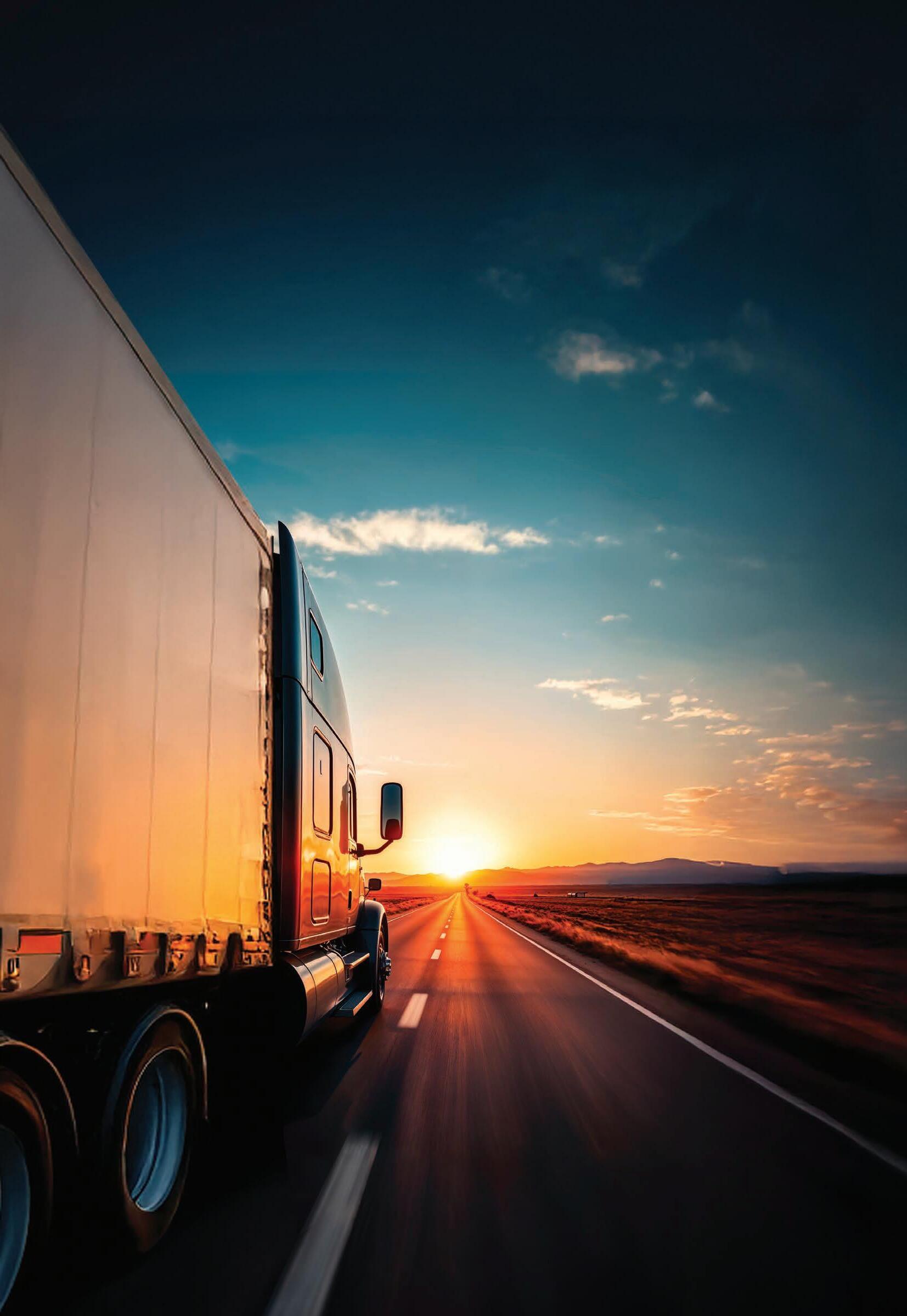
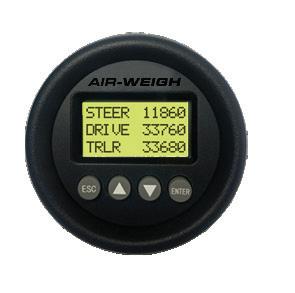
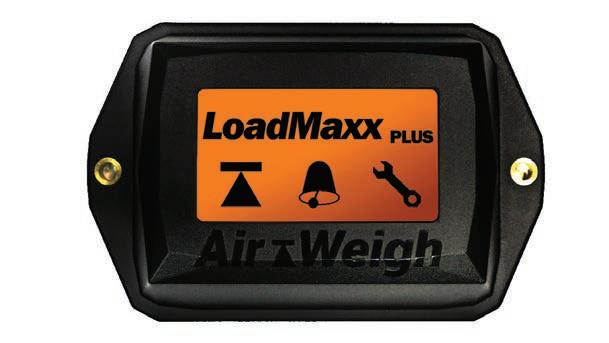

WHEN a heavy vehicle crash happens, it can shatter lives, fracture families, and leave behind complex questions.
For too long, the only tools we’ve used to answer those questions have been police investigations, coronial inquiries, and enforcement powers under the Heavy Vehicle National Law (HVNL).
These all have a role to play. But they are not designed — and frankly, not equipped — to tell us how to stop crashes happening in the first place.
That’s why there’s growing momentum for something different: a dedicated, nofault road crash investigation capability focused on systemic learning rather than legal blame.
This kind of approach already exists for other transport modes. The Australian Transport Safety Bureau (ATSB) investigates rail, aviation and maritime incidents using a noblame model — and has done so for decades.
Internationally, countries like Sweden and the Netherlands have long applied the same idea to road crashes, especially those involving commercial transport.
Their focus is simple: find out what went wrong in the
system — not who to punish — and share those lessons quickly and safely.
So why don’t we already have this for heavy vehicle involved crashes in Australia?
It’s not because the idea lacks support. The Productivity Commission has endorsed it.
Road safety experts from the Australasian College of Road Safety, Central Queensland University and others have all made the case.
Some industry groups, like NatRoad, have also argued that without an independent body looking at system failures, we’re missing opportunities to prevent future harm.
The problem is deeper — and more political.
First, it’s hard to build a new capability when police and regulators are already stretched thin. This isn’t about blaming police — their job is to investigate crime, not map system-wide risk.
But when a serious crash happens, police are often the only ones with the power to act quickly, collect evidence, and get answers. That evidence is then used in prosecutions or coronial inquests. Once that’s done, there’s rarely anyone else with the time, authority or mandate to look deeper.
Second, the legal structure we have is complicated. States run coroners and most WHS investigations. The HVNL is a national law, but only applies in jurisdictions that have agreed to it.
The ATSB has no jurisdiction over road crashes. So building a consistent, independent investigation func-

tion for road trauma means navigating political interests, privacy law, state-federal tensions, and stakeholder trust — a ll at once.
Third, and perhaps most importantly, we need to get the design right. A no-fault crash investigation model that just adds another layer of scrutiny onto drivers and operators without looking at supply chain pressure, contracting terms, scheduling practices or policy gaps — will fail.
Worse, it could reinforce the same structural bias that has led many to feel that heavy vehicle drivers are “always in the frame” while broader systemic issues go unexamined.
That’s why this reform needs careful handling.
It must be built with legislative clarity. Investigators need clear powers to access information — including from upstream parties — but must also be shielded from being drawn into prosecutions or liability disputes. That’s essential to preserve neutrality and encourage cooperation.
It must also include strong governance. Drivers, operators, trauma survivors, enforcement bodies, mental health experts, and regulators should all have a seat at the table when setting strategic direction.
That’s not just about credibility — it’s about designing something that reflects the complexity of the real world.
And it must deal with sensitive issues like drugs, alcohol, and fatigue with compassion, not assumption. Investigators must be trauma-informed, culturally capable, and trained to understand both human error and organisational failure.
The goal isn’t to excuse poor behaviour — but to understand how the system allowed it to take place, and how to stop it from happening again.
Some in the industry worry that this is all too hard — or that it’s another case of government “layering on” more compliance.
But here’s the thing: a nofault crash investigation model
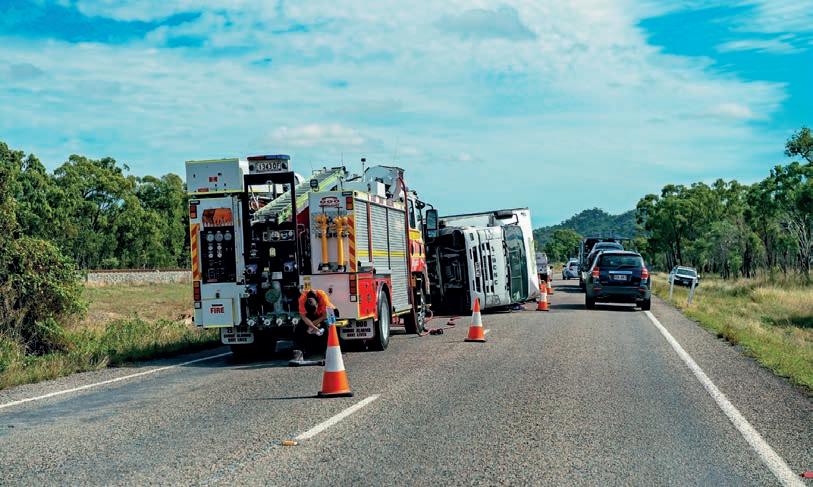

doesn’t replace enforcement. It complements it. Police and regulators will still do their jobs.
What this model offers is something we don’t have now — a way to learn from serious incidents without waiting years for a coronial finding, or relying on incomplete evidence filtered through a legal lens.
It also creates the possibility of national thematic reviews — not just of individual crashes, but of trends like fatigue-related incidents, regional road conditions, or the role of subcontracting in safety
failures. That kind of insight could help governments, planners, insurers and operators invest in smarter solutions — and save lives.
To get there, we need more than good ideas. We need political support, legislative integrity, and implementation funding. That means industry — from drivers to peak bodies — must stay at the table, shaping this reform rather than watching from the sidelines.
Truck drivers are on the front lines of Australia’s road safety story. But they are often the last to be heard when policy is made.
This reform is a rare opportunity to change that — to build something that is fair, practical, and focused on making the system safer for everyone.
Let’s not waste it.
• Ray Hassall is the former Executive Director Statutory Compliance at the NHVR. He left that role at the end of 2024 after 11 years and now heads up Lincoln Regulatory Consulting which tries to help people work out which parts of the regulatory system matter and how they can best build their safety and compliance responses.
AUSTRALIA’S peak membership association for road safety professionals and advocates has joined the trucking industry in calling for a national road crash investigation agency.
The Australasian College of Road Safety (ACRS) said the Australian Government must take urgent steps to address the persistently high rates of road trauma across the country. It’s urging the federal government to legislate and appropriately resource a national road crash investigation agency, like the Australian Transport Safety Bureau
(ATSB), which currently investigates air, marine, and rail incidents but is prevented by law from examining road crashes.
With over 10 times more fatalities on Australian roads each year than in air, marine, and rail transport combined, a dedicated, independent, no-blame investigative body is essential, said ACRS.
ACRS said investigations by the ATSB have been instrumental in identifying systemic safety risks and driving industry and government action to prevent further tragedies.
Applying this model to road
safety would allow for targeted investigations, providing critical insights into the factors contributing to severe crashes, the association said.
“Road trauma continues to devastate Australian communities, with over 1300 fatalities and tens of thousands of serious injuries occurring annually,” said Dr Ingrid Johnston, CEO of the ACRS.
“When there’s a crash on a plane, boat or train, we do an in-depth investigation to find out why it happened and how we can prevent it from ever happening again, road users deserve the same level of investigative oversight to
reduce these tragedies.”
Johnston said the most recent transport safety data from the Bureau of Infrastructure and Transport Research Economics highlights the urgent need for change.
“While road safety experts continue to address preventable causes of crashes, such as speeding, drink-driving and driver fatigue amongst others, the absence of comprehensive, systematic crash investigations means we are missing valuable opportunities to identify and mitigate additional factors contributing to road trauma.”
ACRS stresses that the cre-
ation of a national road crash investigation agency would complement existing efforts, including state-based crash analyses and local road safety initiatives.
“By fostering collaboration and evidence-based recommendations, such an agency would strengthen Australia’s capacity to achieve its National Road Safety Strategy targets and, ultimately, save lives.
“ACRS calls on all levels of government, industry stakeholders, and the broader community to support this critical initiative. The time for decisive action is now.”
In its election campaign initiatives, the Australian Trucking Association (ATA) also called on the next Australian Government to resource the safety experts at the ATSB to investigate serious crashes involving trucks.
“The ATSB is Australia’s independent transport safety investigator,” said ATA chair Mark Parry.
“It investigates aviation, commercial shipping and rail crashes and is recognised as a world leader. We don’t recognise the ATSB as the asset it is; we don’t take advantage of its expertise to investigate road crashes.”
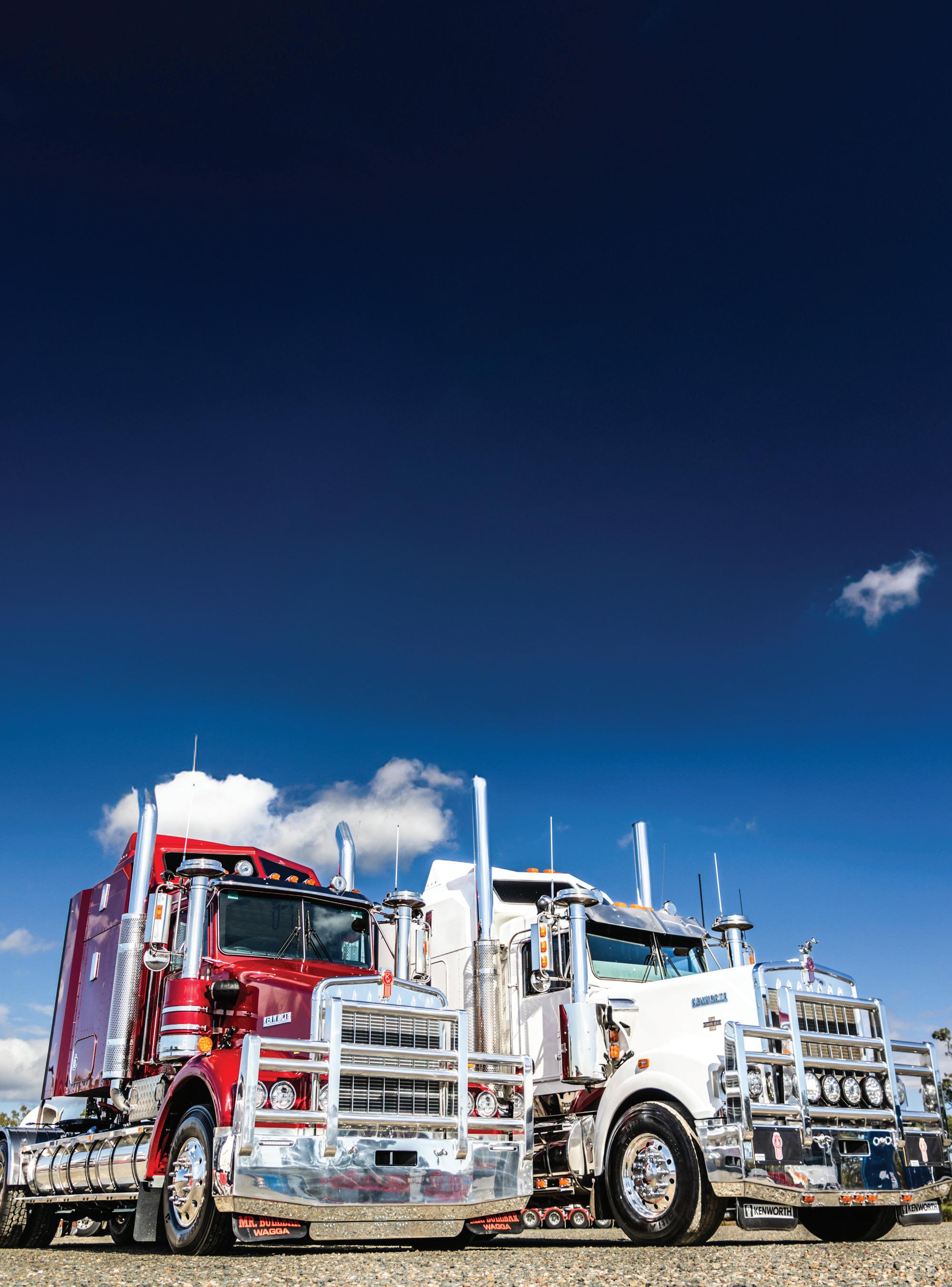

Big Rigs gets a close-up look at the new models setting new benchmarks in technology, safety and design.
BY GRAHAM HARSANT
ISUZU has a problem. A very big problem. And it all has to do with their MY25 all-new truck model range which will be on display at the Brisbane Truck Show from May 15-18.
It will then be released in stages later this year – the heavy-duty range in June and the light-duty in November.
Big Rigs was the first media in Australia to not only view some of these trucks, but also to hop behind the wheel of three of the range for a short test drive around the streets of western Melbourne to get a feel for, and to experience the advances over the previous models.
It has been 17 years since Isuzu came to the party with an all-new product line and over that time they have maintained their number one status as Australia’s best-selling truck manufacturer, which has to date extended to over twice that, at 36 years – a remarkable achievement.
Whilst the company has made incremental changes to the product range over its lifespan, facts are that they have fallen behind the competition in a few areas and have had to rely on their (well-earned) ‘Reliability is Everything’ moniker to maintain their market share. No more.
This new range of trucks puts Isuzu at the top of the tree, either equalling or surpassing the competition in just about every area.
There is so much to unpack with these the MY25 models that we’ll be lucky to fit it all in here, but we’ll try.
At this preview were five models and we drove the NNR 45-150 Vanpack and NLR 45-150 Traypack, both with 150hp (110kW)
and 375NM, along with the FRD 110-240 AM in Pantech guise with 240hp (177kW) and 765Nm.
These are but three of a model range that extends to 15 FV, 19 FR, and 153 N Series variants (of which 45 per cent are car licence models), with ‘ready to work’ to be added, so there will be a truck to suit every Isuzu aficionado’s dream.
There is no doubt, oth er model designations that I’ve forgotten, so good luck choosing your poison!
These trucks are new from their booties (wider tyres) to their top hats. On the outside is a new grill design with the Isuzu logo incorporated in it, which leaves the space up to the windscreen free for cus tomers’ logos.
The headlights are Bi-LED – as is every globe, both in side and out – with signature daytime running lights and tail lamps that will designate an Isuzu as surely as those on a Volvo do. Turn the steering and side LEDS will light up around corners.
On upper models the head lights will auto dip for on coming traffic but keep the left-hand side on high beam so you can see the verge, stray kangaroo or pedestrian. Until recently we’ve only seen this on high end cars.
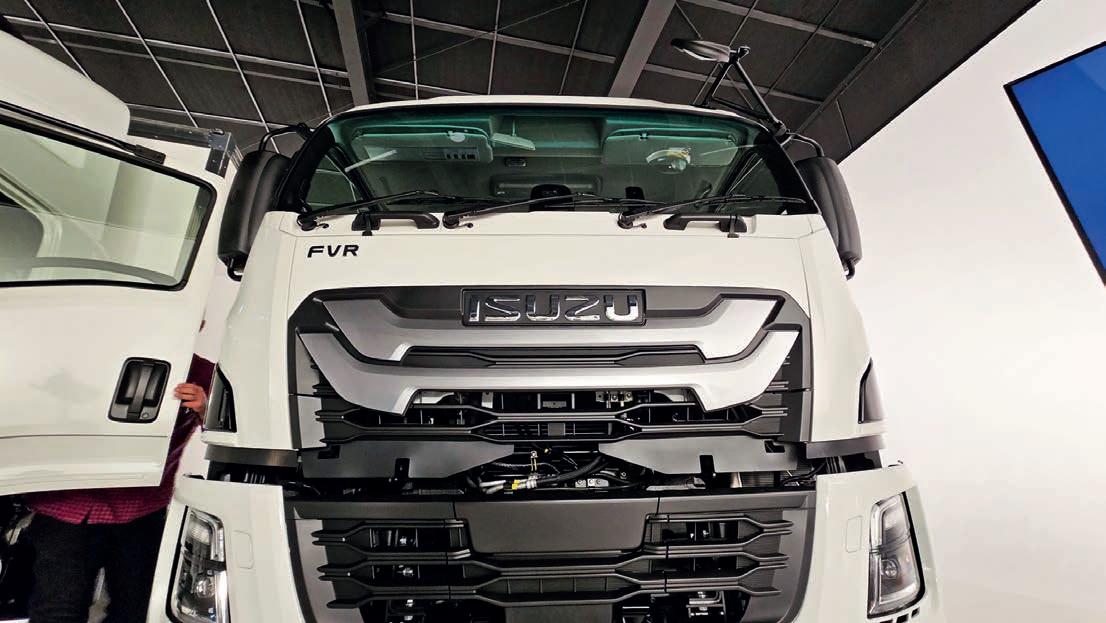

The wipers are rain activated, and the mirrors are electrically adjusted and heated with their placement easy to see around – and over with a slight stretch. No blind spots here.
The bumper is now threepiece so minor scrapes will be cheaper to repair. What we can’t see are the standard Unit Type Hub Bearings which are lower maintenance, as well as the new engines, gearboxes and suspensions.
The trucks now have a prox-
imity key to enter automatically. It only works when you’re close to the truck, so no chance of a would-be thief jumping in front of you to steal your pride and joy.
Even if they got into the truck first, they’re going nowhere because the key needs to be in the cabin for the thing to start. If it’s you in the cab, just leave the key in your pocket, twist the nob placed where once a key would be inserted, and you’re away.
Once inside and we have a new interior featuring an easyto-read digital cluster, auto climate control (with rear air-con in crew cabs), smaller steering wheel with controls and an

electric park brake that acti vates automatically when you put it in park or undo your seatbelt – rollaways are a thing of the past.
There’s a new driving posi tion and the door cards gain pockets, just big enough to place your order book. Just. LED spotlights and a large central LED down light will give you daytime conditions at night to find whatever you’ve dropped on the floor.
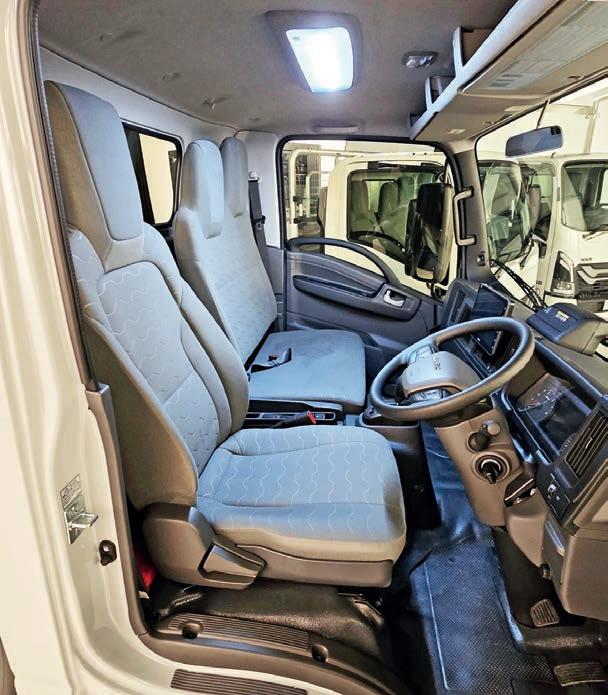
The 10.1-inch multimedia screen has been vastly updated with up to four cameras available.
There’s Android Auto, Apple Car Play and truck-specific navigation which is designed to program in your vehicle dimensions, weight, height, et cetera to ensure your route doesn’t take you somewhere should you shouldn’t be going, like under Melbourne’s
infamous Montague Bridge. There are up to four cameras. There is a standard reverse camera on all products.
There’s an Intersection Warning System with small LEDs on the A-pillars hooked to cameras and/or radar to warn of pedestrians or vehicles crossing, or anything else you’re likely to hit.
If you’re not paying attention, auto emergency braking will take over.
THIS NEW RANGE OF TRUCKS PUTS ISUZU AT THE TOP OF THE TREE, EITHER EQUALLING OR SURPASSING THE COMPETITION IN JUST ABOUT EVERY AREA.”
The windscreen is all-new glass with 99 per cent UV and up to 59 per cent IR protection.
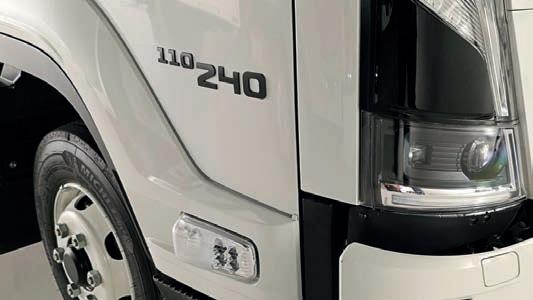
Side and rear glass is close to these figures. The results will be cooler cabs, less load on the AC and, most importantly your health. Skin cancers are a real worry for truckies. There are more safety acronyms than we could possibly cover here, but the bottom line is that every model in the range goes far, far beyond what is required for mandatory Australian Design Rules (ADRs).
Continued on page 16



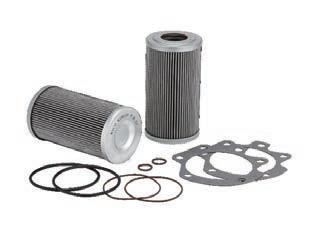


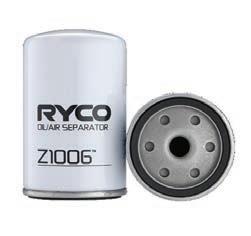
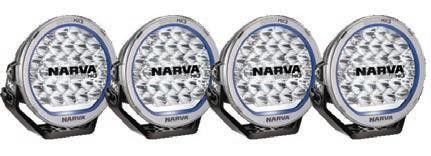
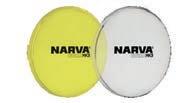


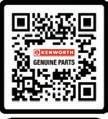




From page 18
NOW it’s time to go for a spin and see if the company ‘spin’ that we’ve listened to for an hour is all it cracked up to be.
First up is the NNR Vanpack. First and foremost are the new seats. Just wow! Comfortable, cosseting, great support under, behind and around, my bumo-meter tells me that these are possibly the best base-spec seats I’ve experienced – and we haven’t moved yet. The consequent drive only confirms this.
This truck is powered by a 150hp/375Nm four-pot and behind it sits Isuzu’s brand new nine-speed Dual Clutch AMT gearbox which is fitted to all 4JZ1 engines putting out 150175hp – unheard of in a truck of this size. Indeed, only Ford’s Ranger outdoes it, and that by only one cog.
Moving off and I’m reminded of a few years back, driving the brand and being impressed by the power and torque curves being so well matched with the gearbox.
Well, this is light years ahead. The dual clutch transmission preselects the next gear before you’re out of the first one and you’re moving from gear to gear instantaneously with no loss in torque.
Indeed, you have to listen closely in what is a very quiet, well-insulated cabin to even hear the changes, and you literally don’t feel them at all. This what it’s all about. Kick down is instantaneous. Gone are the days of delays. We are talking about trucks which will haul a fair bit of weight so the gearbox development - moving from six to nine-speed - has been massive to handle the tasks required of it. This ‘box’ is a game-changer. By-the-by, it will also reduce fuel consumption.
The engine revs freely and in conjunction with the nine-
speed, this 50 per cent loaded truck jumps off the line, keeping up with all and sundry on the open road. Isuzu have long resisted the adoption of AdBlue but ADRs have reached the point where there was no choice.
Don’t be too disappointed long-time Isuzu owners. Rather, think of how long you’ve been able to avoid using the stuff.
On the bright side, Isuzu are fitting quite big AdBlue tanks, so topping up will be relatively infrequent.
The smaller steering wheel is now electrically power-assisted meaning easy manoeuvring at low speeds and weighting up on the road.
Great to hold, it suppresses feedback without feeling removed from what is happening beneath you.
The truck sits on front coil/ rear taper leaf suspension + shock absorbers which works a treat, smoothing out the crappy surfaces we are all used to.
The multi-information dashboard is very legible, the nextgen detection system showing how far away the vehicle in front is and how fast it is travelling.
In this particular product, the system employs a stereo camera system which is unique to Isuzu.
The camera is on the dash at the base of the windscreen rather than on the windscreen at the top, which has a serious advantage, in that that if you break your screen, you’re going to be up for probably hundreds rather than thousands of dollars which is the case with a lot of passenger cars using the technology today.
The detection area of this system has increased from 60-120 degrees, meaning it’ll see pedestrians you may have missed.
There is so much more to the

safety systems in these trucks that it is impossible to cov er them all here, but one that stands out is the Mis-Accelera tion Mitigation System.
Here, if you press the go-fast pedal instead of the brake and there’s something in front of you, the truck overrides your wrong footing, only moving forward at 10km/h – and of course stopping if need be.
Next up I’m in the NRL Traypack. Same drive train and features but with tapered leaf suspension all round. It’s hard to tell the difference.
Ash, my Isuzu companion, invites me to try out the Ad vanced Emergency Braking as we careen towards a bunch of cars at the traffic lights.
All I can think of is that these trucks are so new the paint has hardly dried, there are only a handful in the country and that this truck will be needed at the Brissie Truck Show.


Worrying about Murphy’s possible presence I politely decline. Maybe another day. So, I hit the brakes.
Finally, I’m in the bigger FRD 110 240 – the smallest of the F Series with 240hp/765Nm from its 5.2-litre, four-cylinder engine, coupled with a sixpeed AMT trannie.
I test the cruise control, and the truck does it all – speed up, slow down and stop with traffic, moving off when those in front do.

Isuzu’s Jeff Gibson drove this truck from Sydney to Brisbane without touching anything other than the steering wheel! On the open road this and the other trucks read speed signs. If you wish to obey them (a smart move) simply press ‘resume’ on the cruise control and it will comply. Good stuff! Of particular note is the topof-the-line Isri seat. Designated 6860 875 NTS2, the bloody thing is more confusing than Isuzu’s product range titles, but man, is it good! Integrated seatbelt, two-piece back, shoulder adjustment and three levels f heating and cooling, this is a wonderful fatigue mitigator.
The MY25 Isuzus are top of the tree in design and safety with a range to satisfy anyone, even those who may want a
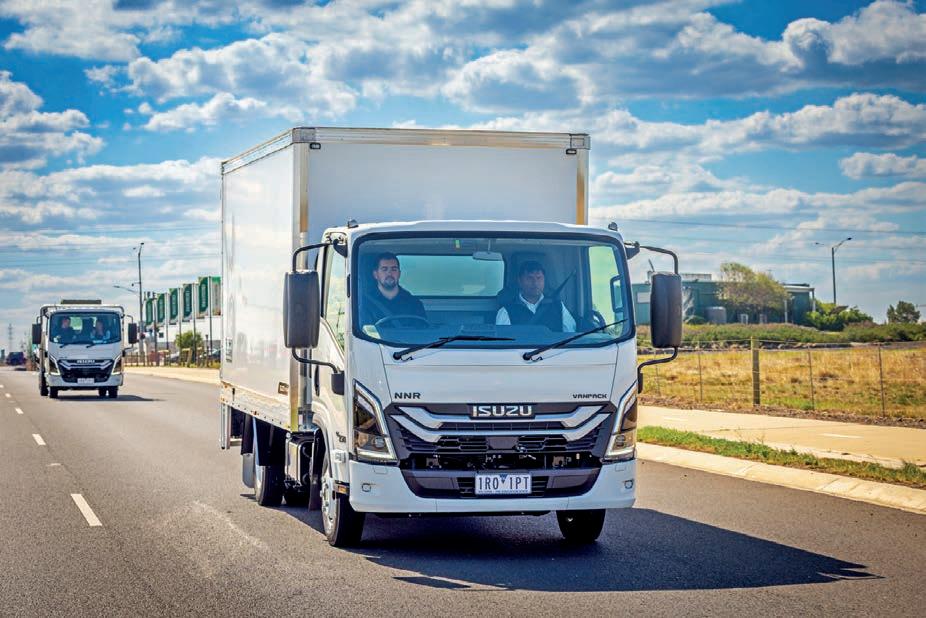
manual - although they will only be produced to order so you may have a bit of a wait. Pricing was not discussed but I’m predicting a substantial rise over the current models, given the huge leap in technology.
Will that hurt the brand at all? I doubt it. Isuzu owners are rusted onto the brand,
and they’ll be getting a heap of improvements in every sphere for those extra dollars. Isuzu has been number one in the market for 36 years – pretty well since I was a gleam in my mother’s eye – and with MY25 they will surely continue to dominate the market.
If you can, get to the Bris-
bane Truck Show from May 15-18 and check them out rather than wait until they appear at your dealership. So, why does Isuzu have a problem?
I doubt that they will be able to meet the demand these new trucks will create. A very high-class problem indeed.


Two of the biggest items in the Australian War Memorial’s collection have travelled through Canberra and into their new home at Anzac Hall.

THE Australian War Memorial in Canberra is currently undertaking the largest relocation of military technology in its history.
Its Anzac Hall has been undergoing a complete transformation since 2021, which will see an additional 6500 square metres of exhibition space added across two levels.
Manager of Collection Logistics and Projects at the Australian War Memorial, Kassandra Hobbs, was responsible for the decant of A nzac Hall four years ago. As the new space nears completion, she is now working to refill the space.
“We will be moving over 3000 objects into the new gallery. It will take us from now until the end of the year to get the gallery ready.
We’re looking forward to welcoming visitors back into the space in early 2026,” she said.
Two of the largest items that will be on display are a RAAF F/A-18 Classic Hor net fighter jet and a C-130 H were both recently transport
ed from the Australian War Memorial’s warehouse in Mitchell, Canberra, to their new home at Anzac Hall – with Plant Haul Heavy Haulage tasked with handling the move.
Plant Haul was started in 2005 by Roger and Danielle Fahey. It specialises in local and interstate heavy haulage and over dimensional transportation. The business operates from depots in Sydney and Brisbane and has a fleet of 26 trucks and 39 trailers, including specialised low loaders and tilt trays.
In his 16 years with the company, Plant Haul National Manager Jeff Fenech says he’s seen some incredible things, but nothing quite like the Classic Hornet.
“We’ve moved some interesting and heavy objects before, but the jet was pretty impressive,” he said. “Plant Haul has moved helicopter fuselages in the past. This is the first time we’ve transported a fighter jet with the
Monday, March 31. Retired in 2020 after over 6000 flying hours, this was the first R AAF fighter jet to drop bombs in combat since the Korean War, taking part in patrol and combat missions over Iraq and Syria.
The C-130 Hercules nose cone followed on April 1. It has been used to carry Australians out of crisis zones, flown life-saving aid into disaster-stricken regions, and returned Australia’s fallen home with dignity.
With its enormous wing span – stretching to 8.4 metres wide – Kassandra said transporting the fighter jet in particular brought with it lots of complexities.
The Classic Hornet weighs 12.8 tonne and sat at 5.7 metres high once loaded onto the truck.
W hile it may not be the biggest fighter jet that will be on display at Anzac Hall, it was the biggest single item that will be moved. “There is a Lancaster bomber from Second World War, known as ‘G for George’ that will be the largest item on display, but that breaks down into pieces, so it’s like a LEGO set, and it’s much easier to transport,” added Kassandra.
“The technology now for jets is very different. Because of what they do in service, the wings aren’t easy to remove, so that’s why this jet had to be moved in one piece.”
For the C-130 nose cone, it was transported on the cantilevered mount it will be displayed on, weighing a total of 9.4 tonne. On the truck, it sat at 5.65 metres wide and 5.9 metres high.

The Classic Hornet hit the road on the night of
“Since some of our other moves were completed in the past, we’ve had the light rail installed in Canberra, so that has added extra challenges. There were roads we used to be able to travel through that we can’t anymore,” Kassandra explained.
As Jeff explained, “At Plant Haul we pride ourselves on our professionalism and care taken with all loads, however, extra care was taken due to the significance of what we were transporting.”
Continued page 20


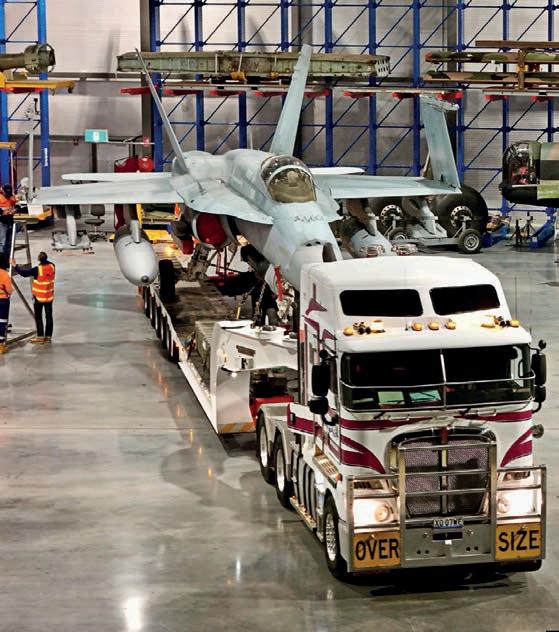
From page 18
IT’S usually about a 10-kilometre drive from the warehouse to the Australian War Memorial, however this transport route extended 38.1-kilometres to ensure the safest option to get these important artifacts to the Australian War Memorial.
“We’ve been planning these moves for approximately four months at Plant Haul. The best route with the least disruptions needed to be determined before securing for a permit from the NHVR,” said Jeff.
“The heights and widths of trees were assessed along the route, Telstra completed a scope of all of their overhead cables, Evoenergy de-energised three high voltage powerlines and TPG lifted three cables for us to travel under.
“Some roadside tree trimming was required due to the jet being an item of national significance. We needed to be sure there were no trees that would damage it.”
For both moves, experienced Plant Haul driver Steve Nagy was behind the wheel.
“He does a lot of our specialised moves. Both the jet and nose cone were transported with our K200 and Drake 5x8 Swing Wide low loader. That trailer has a drop wheel and hydraulic neck, which allowed me to get the load down for the nose cone,” Jeff continued.
Steve has been driving with Plant Haul for the past nine years and in that time has moved some massive pieces of equipment. “But I’ve never moved anything quite as cool as a F/A-18 fighter jet,” he told Big Rigs.
“The difficulty was ensuring that absolutely nothing was to touch the loads, not even the tiniest branch. The F/A18 had the problem with the width, and the Hercules nose cone had the problem with the height – so they both had their own challenges. It took about 3 hours to move the fighter jet just over 38-kilometres. It was a lot tighter in some areas than we had anticipated.
As Steve continued, “Both of these moves were a pretty big deal so there was a lot of

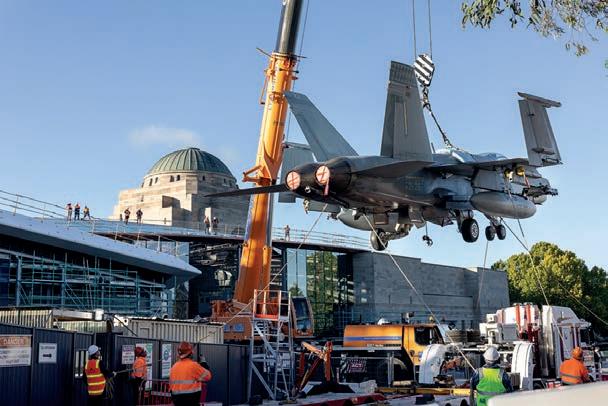
THE DIFFICULTY WAS ENSURING THAT ABSOLUTELY NOTHING WAS TO TOUCH THE LOADS, NOT EVEN THE TINIEST BRANCH.”
STEVE NAGY
“At 10pm there isn’t a lot of traffic around Canberra and we had the right of passage along the whole way,” added Jeff. “ACT Police would block every intersection as we travelled through so we didn’t have to stop. The relocation process was seamless, nd the team was fantastic. It has been a privilege to be part of this project and to work with the Australian War Memorial.”

planning that went into this. The moves were completed without any issues. It felt good that everything went perfectly.”
For Steve, being involved

For Kassandra and the team at the Australian War Memorial, seeing the Classic Hornet and C-130 Hercules nose cone arrive at Anzac Hall was a proud moment. She’s been working there for 16 years and says watching Anzac Hall come together again has been a highlight.
“There are 55 people working here in Collection Services and every one of us has been involved in this project in some way. This is a culmination of all the work we’ve been doing here for so many years,” she said.
“Some of these objects have never been on display. The jet and C-130 have never been on public display at the memorial before.

in this move was made even more special by the fact that his father was in the RAAF.
“Once Anzac Hall opens, it’ll be great to take the kids down and be able to tell them that
I helped to move those items in there,” he said.
Along with the truck there was a large convoy including four police cars, three oversize escorts, two vehicles
each for Evoenergy, ACT Trees and TPG, and a vehicle with Jeff, Plant Haul owner Roger Fahey and representatives from the Australian War Memorial.
“We’re doing this for the Australian public, as well as for the veterans and their families so that they can come and see their service and their story on display.
“With the redevelopment of Anzac Hall, the space has drastically increased in size. This means we’ll be able to tell many more stories, including stories from Afghanistan, the Middle East and peace-keeping missions,” she added.
“Everything has been in storage since 2021 so it will be lovely to have all the visitors back next year and walking through our galleries.”
Plant Haul will also be involved in two other big moves for the Australian War Memorial, transporting a Boeing CH-47 Chinook helicopter and an F-111C aircraft later in the year.





AUSTRALIAN family owned and operated, Shephard Transport Equipment (STE) specialises in the design and manufacture of tippers and trailers, as well as offering services and repairs.
STE has over 46 years of experience, catering to all tipping needs – both large and small – thanks to its highly experienced in-house team, who can provide engineering and drafting capability for standard and customised builds.
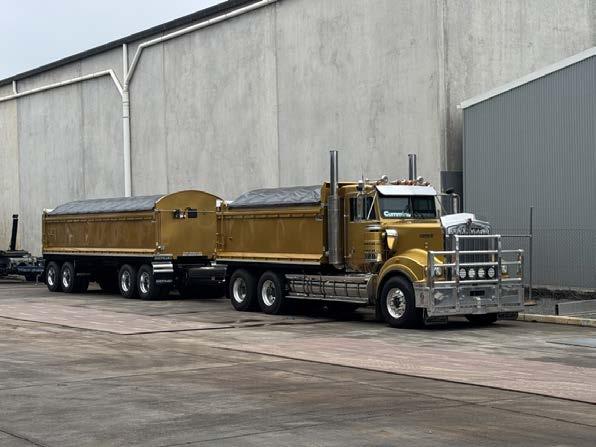
Based at Larapinta in Southdesigns. STE can help design and ers and truck bodies including ble, road train, dolly, flat deck

tag trailers. For truck bodies, the business can assist with two-way tipping, water, hook lift and skip bins.
STE is well versed in Performance-Based Standards (PBS) builds and has become a one-stop shop for customers wanting to increase productivity with PBS-approved equipment.
The company was started in 1979 by a group of five people – one of whom still works with the business today.
Graham Weatherhog started his career as a cadet draftsman at a Queensland cement works in the early 1960s before moving into truck body and trailer
uilding and eventually helping to form STE.
Graham fondly recalls how he and two workmates worked at a Brisbane-based truck and coach body builder in the 1970s. They joined forces with John Shephard to form a new trailer building company called Shephard Transport Equipment.
“STE was started in February 1979 after we met John Shephard who with his wife Val owned a second-hand trailer sales business and was looking to expand into trailer manufacturing,” Graham recalls.
from Domino Hedges and another bloke he had working
for him to jointly acquire a 20 per cent stake in the company while he retained 80 per cent.”
As Graham continued,
“When we started STE in 1979, John Shephard was doing sales, I was doing the design drawings, pricing, invoicing, purchasing and pick-ups and the other three guys were building the gear in the workshop.”
Eventually Graham bought the shares of the others in the business, including John and Val Shephard. Then, his son, daughter, son-in-law and spare parts manager each bought 25 per cent shares in the business, and Graham continued to
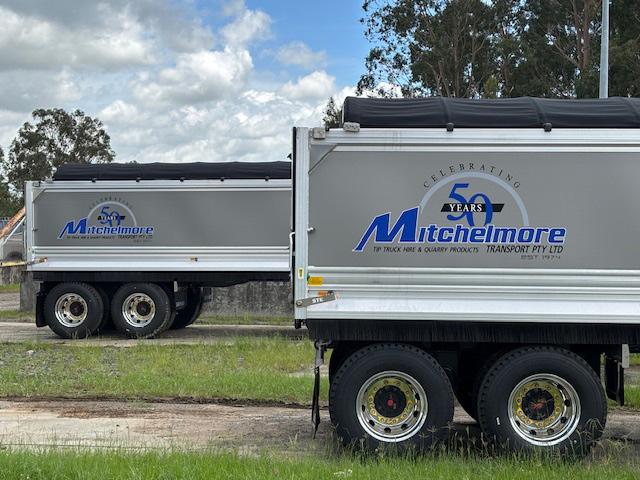
Along with its trailer building capabilities, STE also has a workshop, offering a variety of services including straightening and repairs of roll overs; repairing accidentally damaged trailers and bodies; general repairs; re-sheeting floors; welding cracks, replacing hinges, pivots and other wearable parts; overhauling axles, suspensions, turntable and couplings; and tarp repair.
To add, STE is well versed in hydraulics, offering the supply and fitment of hydraulic equipment. STE performs full hydraulic kit installations on truck and dog and semi-tippers, including PTO and pump installations and aluminium or steel tank modifications and repairs.
STE also a comprehensive range of spare parts and components covering everything from hydraulics and fifth wheels, to tow couplings, tarps, axles and suspensions, tanks, tyres and wheels, and lights.
ste.com.au.






Join
at


FWR AUSTRALIA 85 Radius Drive Larapinta, QLD 4110
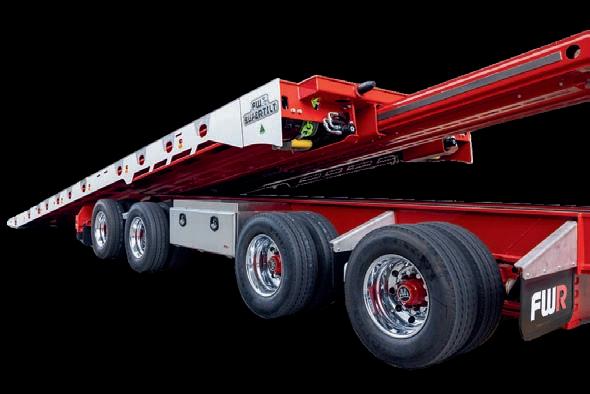








quality. That’s why our customers don’t just choose us once – our reputation has built a loyal community of repeat customers. Whether you’re an owner-operator or managing an entire fleet, FWR is committed to keeping you on the road with trailers built to perform and priced to impress.
We are FWR – Join the journey FWR’s story is one of passion, growth, and commitment to the transport industry. From
or a supertilt, our team works closely with our customers to design a cost effective transport solution that is tailored to their business needs.
Built fast. Built right. All roads lead to FWR Everyone wants their trailer ASAP – and we get it. At F WR, one of the biggest advantages we offer is a streamlined build process, keeping
name synonymous with excellence in bulk transfer solutions since 1975.
K nown for its rugged durability and innovative engineering, AZMEB has set the standard in bulk transfer solutions, mimicked by many, equalled by none.
AZMEB trailers are purpose-built for the Australian transport sector, offering multi-combination configu-
performance – built for Australia.
Larapinta Open Day –May 16, 2025 Truckies, industry professionals, and transport enthusiasts – you’re invited! FWR is hosting an Open Day at our state-of-the-art facility in Larapinta, giving you the opportunity to see our trailer manufacturing process
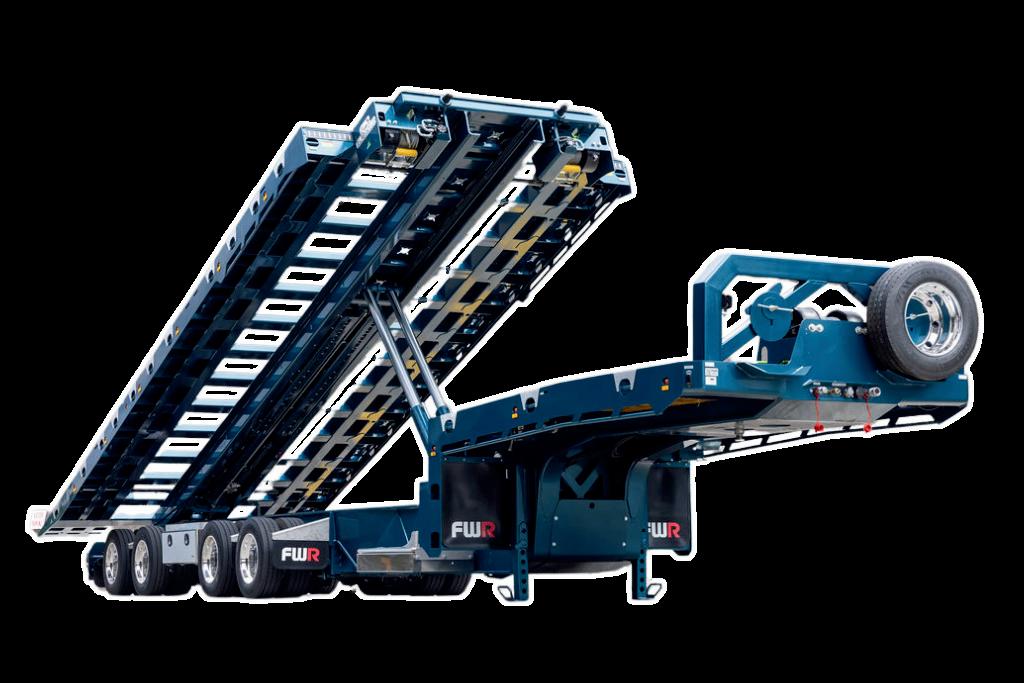

We’ve joined forces with Tru Grit and Shephard Transport Equipment where you can
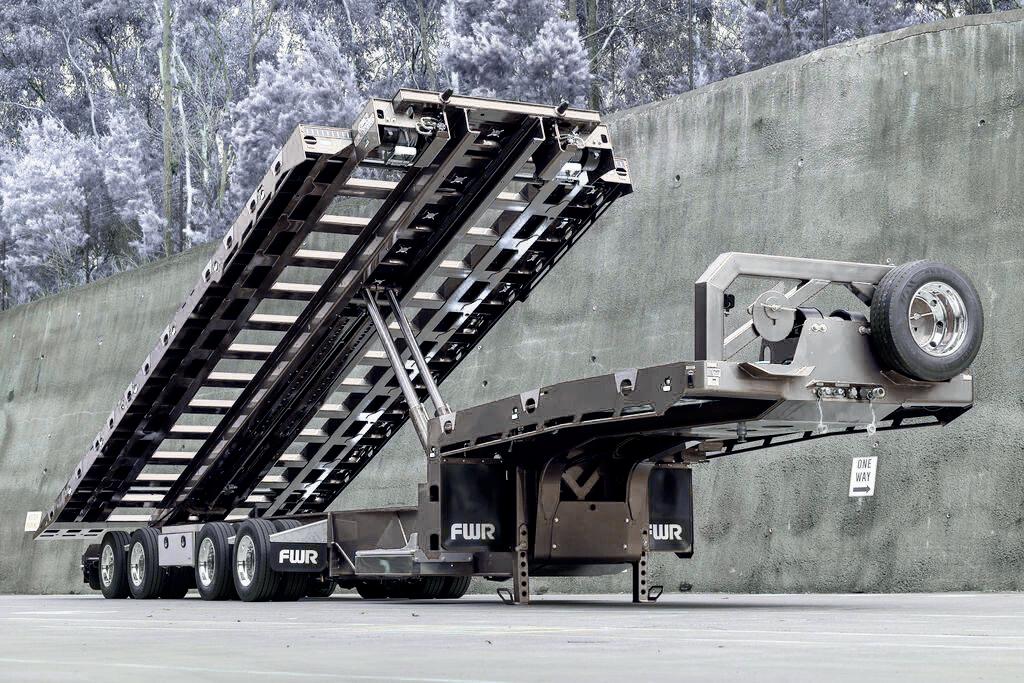









lian-made trailers at our Larapinta facilities! Free tickets at fwr.com.au.
What can you expect?
All of our popular trailer models will be onsite and on display.
site to keep you fuelled while you explore. Head to the FWR Open Day for the opportunity to connect with fellow truckies, industry leaders, and FWR experts. This is your chance to meet
port industry, this event is one you won’t want to miss.
your worksite – 100 per
ing trailers, we’re creating
ith a relentless focus on quality, a bold step forward with AZMEB trailers, and an open invitation to connect, there’s never been a better

We love trailers – and if you’re ready, let’s build something great together.
For more information, please visit fwr.com.au or call 07 3726 1166.
Join us at our Larapinta Open Day on May 16, 2025, anytime from 7am until 3pm.

TRAILERS ON DISPLAY AT ALL THREE LOCATIONS

Super Tilt FWR
Quad Axle Deck Widener FWR
Tri Axle Drop Deck Widener FWR
Elite Series Tag Trailer Range FWR
AZMEB Trailer Range FWR
TRU GRIT Trailer Range Axis Place
STE Trailer Range Arc Place







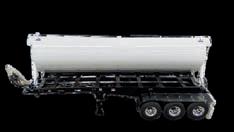







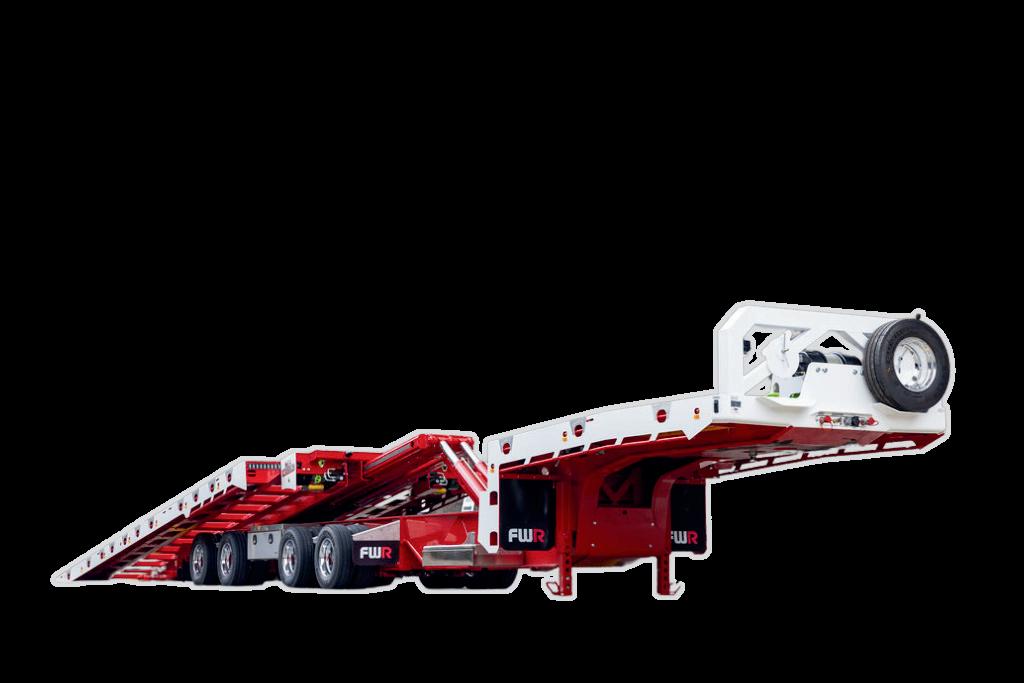
BY DAVID VILE
SITUATED at the junction of the Cobb and Riverina Highways in the Riverina region of NSW, Deniliquin is a trucking town, and the Purtill family has been a prominent name in all things transport with a history in the area going back to 1951.
From an initial foray as a school bus operator, company founder Keith Purtill branched out into fuel transport in 1974, taking on the local Caltex agency, with the company growing over the next few decades into a large multi-faceted company.
Along the way the family had amassed quite a diverse collection of vehicles and memorabilia, and with a vision to showcase this and celebrate the regions transport history, opened ‘The Depot’ in early 2020.
The museum has since become a popular tourist attraction, drawing around 15,000 visitors annually. The facility has also been a finalist in the NSW Tourism awards in the last few years.
Managing Director Neville Purtill is justifiably proud of the facility which houses everything transport related, from trucks and cars through to a wide range of transport and oil-company memorabilia, and in particular, a couple of long serving buses from the Purtill fleet.
“The Depot has been labour of love,” Neville said. “We

have our 1948 Bedford bus ‘Rosie’, which at the time was the oldest registered school bus in Australia when we took her off the road. It had never been restored and people wanted to see it, which started off the idea for the museum. It grew from there, and also part of the brief was to honour the transport pioneers who did the hard yards to get the industry to where it is today.”
Having divested the bus operations in 2019, fuel haulage and distribution is today the cornerstone of the Purtill

business. The company cele brated its 50-year association with Caltex (now Ampol) last year, with a fleet of four road trains and a B-double keeping fuel supplies flowing across a wide part of southern NSW.
“We started off with Caltex with one Bedford truck - back then it was a lot of drum fuel as well as bulk delivery. The job has grown, and we have seen the name change to Ampol - with our road train project we were the first ones to pull road train fuel out to the Caltex terminal in Newport (Melbourne) up into New South Wales,” he said.
As a result of the association with Ampol, The Depot also houses the Golden Fleece fuel memorabilia collection with the centrepiece being a beautifully restored 1948 Fargo fuel tanker, along with many other Golden Fleece items ranging from fuel bowsers and old signage through to restaurant menus.
“The Golden Fleece is collection owned by Ampol and is on permanent loan to usit was locked up in a shed at the Kurnell Refinery. When Ampol management saw what we were doing here they asked if we would consider putting it on display here, so we sent three trucks up to

Sydney and unveiled when it we had the national Ampol distributor conference here in 2023,” explained Neville.
With the vehicle collection housing everything from police cars to a pink Cadillac through to a Rolls Royce once owned by Christopher Skase, the trucks currently on display all have a connection to the Deniliquin area.
“We have a focus on local trucks, we have a couple of trucks including a White 3000, and a Maple Leaf rebuilt here in our workshops which were owned by the late Neil Scott who was a stock carrier here in the 1950s.
“We also have a couple of Ford Louisvilles, one is a northern Victoria truck, and the other is painted in Grimison Transport livery which share that vision of honouring our local carriers,” said Neville.
With the annual Deniliquin Truck Show and Transport Industry Wall of Fame induction now a fixture on the calendar, Neville is also looking at using The Depot to help honour the locals who have made their mark in transport.
“We want to set up a display here which will acknowledge the Wall of Fame

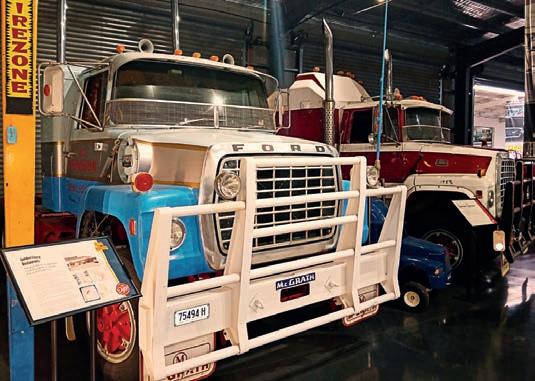
inductees and tell a bit more of their stories - I want their families to be able to bring people here to tell their stories. There are a few families around the district who have gone looking for ‘dad’s old truck’ to restore and want to display it when its finished.”
Education of the younger generation is also one of the Nevilles goals.
“We have education rooms to get school groups here and teach them about transport and especially for kids before they get their licences and get out of the road – we show them what a road train is and where the blind spots are and


so on - we can also show kids how an internal combustion engine works, and so on.”
Open seven days a week, The Depot is an easy place to spend half a day taking in all that there is to see, and with plenty of ‘stuff’ still stored away, future expansion is on the cards.
“Every town relies on road transport at some stage – if there’s no transport it doesn’t happen. It is a very strong transport district around here and there’s stories behind the people here, and we can help tell those stories of what life was like back in the day,” concluded Neville.



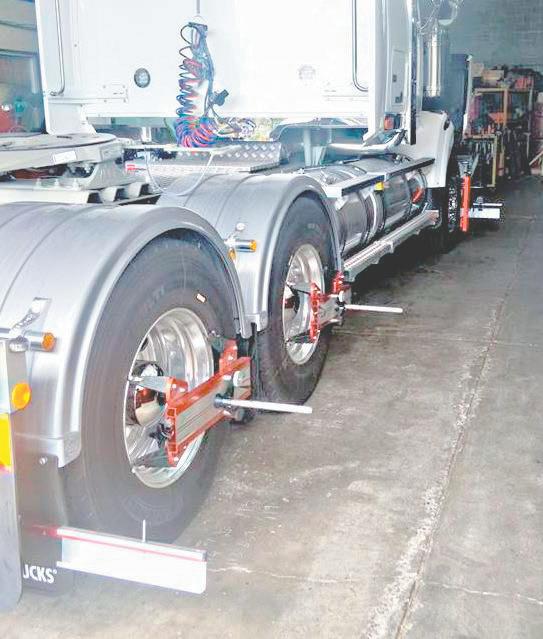



The nostalgic convoy of classic trucks retraces the old Hume Highway, rekindling memories of mateship
BY GRAHAM HARSANT
WAY back in 1972, when I was just a lad, my employer transferred me from Melbourne to Sydney. Whilst I fell in love with the harbour city, I missed all my mates I’d had grown up with.
Consequently, any chance I had – long weekends, Easter, whatever – I would jump in the car on Friday night after work and head back down south. My hazy memory tells me that the trip used to take between 12 and 13 hours.
What I remember clearly was the endless line of trucks crawling uphill, flying downhill and rushing madly to pass each other wherever possible – which wasn’t all that often.
I also vividly remember the towns I would drive through being lit up like Christmas with truck stop signage proclaiming that this was the best place to eat anywhere, anytime, full stop!
As is the case in Victoria, these towns have now a ll been bypassed for many years and have faded into distant memory for those whose job it is to get between the capital cities in the shortest possible time.
And that is what makes Haulin’ the Hume (and its southern cousin, Crawlin’ the Hume) such wonderful events. Because the fact is a good percentage of the trucks taking part in the run are from the era of the old Hume and indeed, so are the fellas behind their wheels.
Haulin’ the Hume harks back to a time when drivers would stop and talk to each other, where they would pull up to lend a helping hand in the event of someone breaking down and would become good mates on the road through a common bond.
This year, Haulin’ commenced its run a little further south from the Luddenham Showgrounds on April 12 and continued beyond its usual ending point, Yass through to Gundagai.
Don Turner drove his International R210 down from the Gold Coast to attend Haulin. With 2.3 million miles on the clock, Don’s had the truck since 1978, buying it from his dad in 1983, going out on his own and subbing for his father, whose business he took over in 2000.
“It has an L10 290 in it with a Jake, 15 overdrive and 4/11’s so it gets along at 130 km at 2150 so it’s pretty quick – only in the Northern Territory of course.”
Marty Stockley-Smith from St Peter’s in Sydney turned up in something a little different in a 1942 Ford Jailbar
“It is actually a three-quarter ton express so it has a 17-inch wheels with the split rims so it’s a little bit rarer than most Jailbars.
“It’s been restored over the
last four to five years and has the original Flathead engine in it. Basically, everything has been put back to original.
All the six-volt gauges work – everything runs as it would have done in 1942 – some say even better.”
Marty is no stranger to Haulin’ the Hume, having attended a few times before, usually in a 1962 Ford 100 or in one of the old Clipper buses.
“This keeps up with most of the trucks. It ticks along nicely at 80km/h. I don’t like being on the freeway as you would appreciate but other than that it handles itself quite well and goes around corner then better than some of the trucks although it doesn’t stop quite as well.”
Anthony Brown from Picton joined in the run in his 1978 K123 Kenworth, his participation in Crawlin’ the Hume last year giving him the bug.
“I’ve done a bit to the truck since last year when I had only just got it - the guards, checker plate, new light bar, painted all the intakes at the back, dressed it up a bit and painted the chassis.
“I just like the older trucks you know. You just don’t see them out and about every day so it’s a chance to mix with like-minded people and guys who like to keep the old stuff running. You have a look at some of the trucks here, the work that goes into them is just amazing. But no-one cares what they look like – it’s all about being on the run.
“It’s been a great opportunity to catch up with a few blokes we now know, from last year, that are doing at all and keeping history alive. Going through the old towns is really something special. I drive trucks for a living and no one pays any attention but with a run like this, everybody is out and about and appreciative of everyone in the run. And that’s something different for a truckie!”
From Razorback, the Hole in the Wall, Berrima, Dugiong and all the towns in between, as well as through parts of the old Hume that are now on private land, some 350 trucks of all persuasions meandered along a once well-trodden path, stopping when the fancy took them and giving the trucks an occasional squirt when no-one (official) was looking.
The day finished with a dinner at the Gundagai Services Club who did a sterling job.
The next morning some silly prizes were handed out and then everyone disbanded with promises to do it all again next time – with many indicating they’ll be at next year’s Crawlin’ the Hume event, which is scheduled for April 11, 2026. Bring it on!
Continued on page 28
and the golden era of Australian trucking.







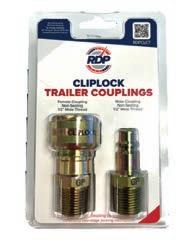





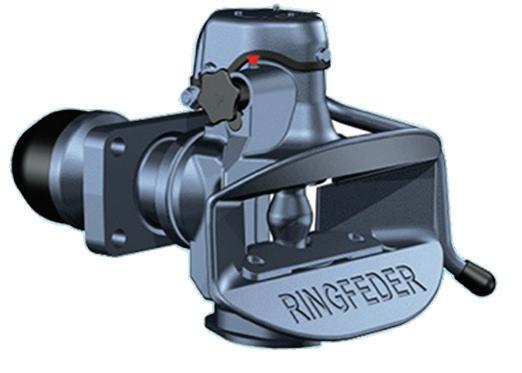

From page 26
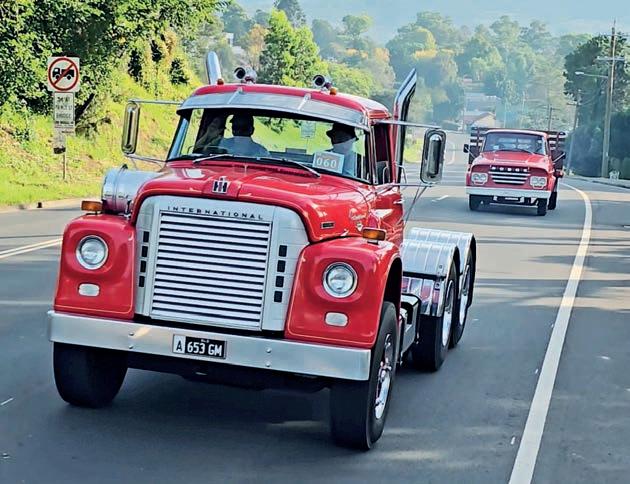
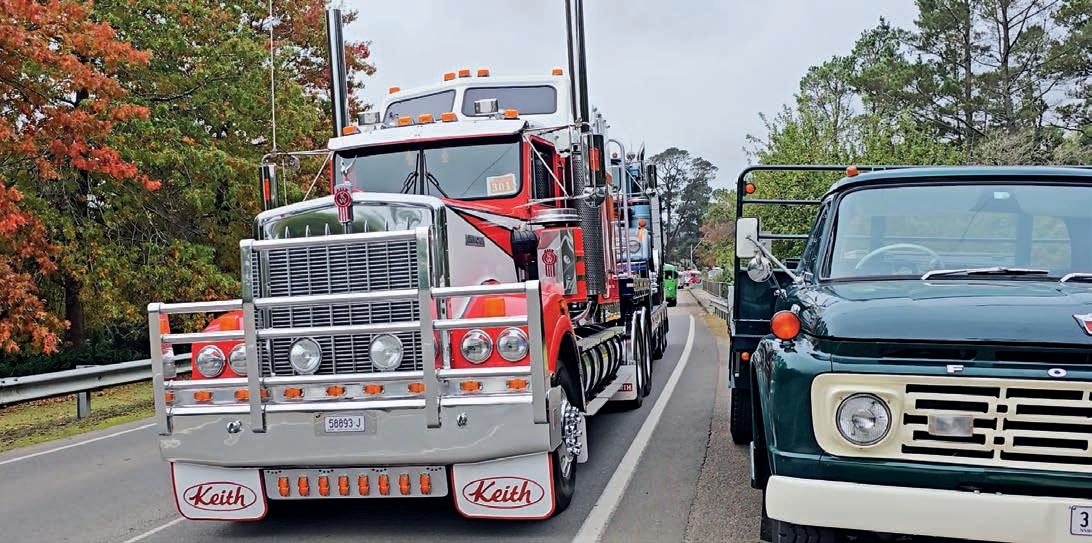




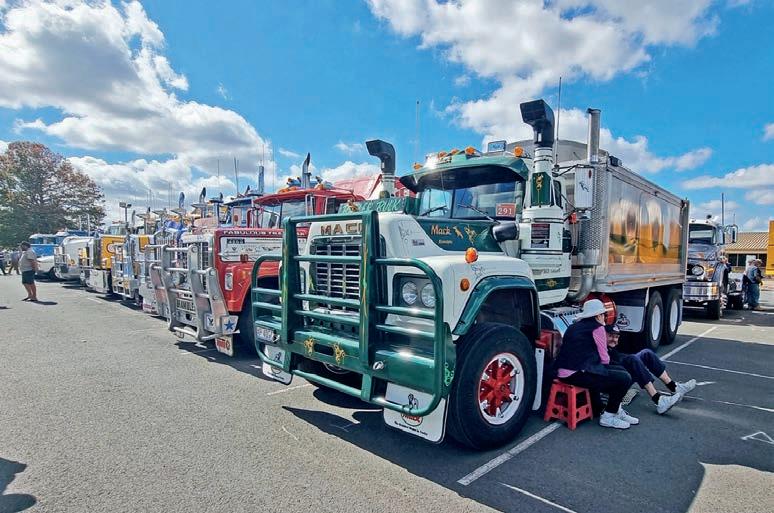





SHELL with there are even more reasons to send in your best truck shots.
team will choose a #PicOfT heMonth, with the lucky winner r Coles Express Gift Card.

Keep an eye out for our regular posts on the Big Rigs Facebook page, calling for your best truck photos and add yours in
Big
nounced each month.
Keep those amazing truck pics coming!




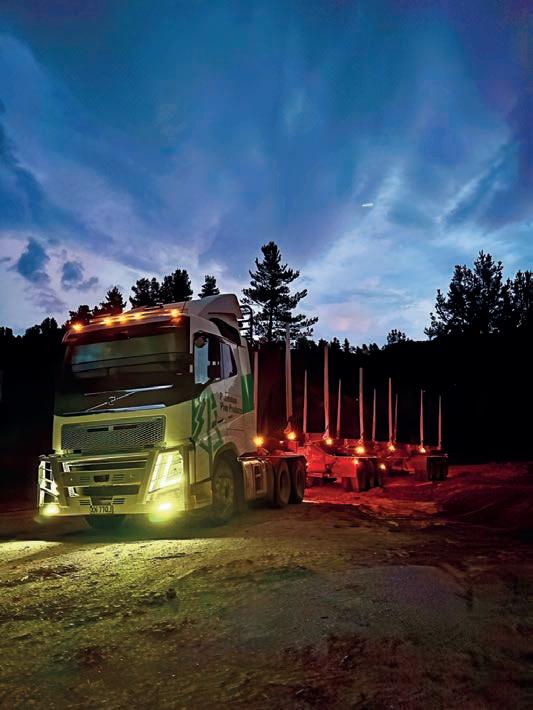
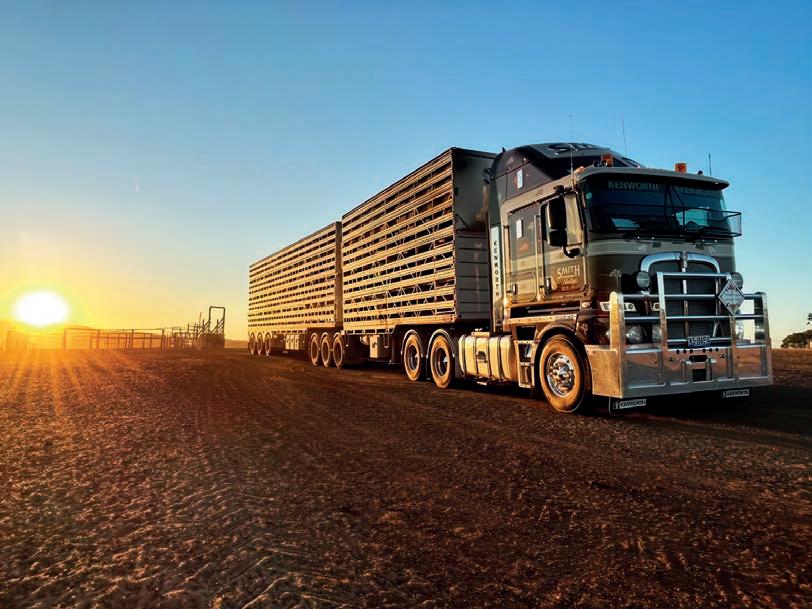



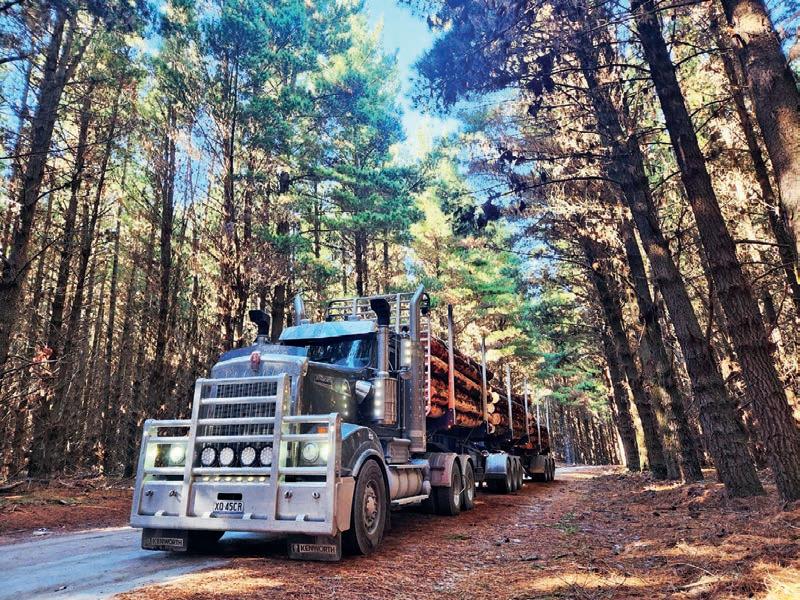



HAVING a reliable set of lights is essential when it comes to driving at night, and this is especially true for truck drivers who are often behind the wheel for long stretches of time facing dark roads and unpredictable weather.
Great Whites LED lights feature advanced LED technology, which produces an intense beam that can reach far a head, illuminating the road and any potential hazards. This is particularly important for truck drivers who may be carrying heavy loads or driving on unfamiliar roads. The high-quality beam produced by Great Whites LED lights ensures drivers can see obstacles in their path and react quickly to avoid them.
Great Whites has unveiled two new innovative headlight solutions to its catalogue, the 7” LED Headlight (GWF1005/GWF1005CH) and 7” High Beam Headlight (GWF1010/GWF1010CH).
Available in black or chrome finish, the headlights deliver greater performance with long lasting LEDs. As with the previous Great Whites headlights, they are certified as ADR compliant for RHD vehicles.
The GWF1005 incorporates both park and indicator lights and includes class 1 amber strobe lights that can be synchronised across both headlights. This innovative advancement allows for

greater visibility and ensures you are safe on the road without the need for installing additional warning lights or strobes and beacons on your truck.
The GWF1010 features LED park lights, and is an ideal replacement for factory sealed beams or 7” halogen lights.
With a smarter, more intense light source, Great W hites deliver greater performance with long lasting LEDs. Featuring full ADR compliance for RHD vehicles and incorporating both park and indicator lights,
these headlights also include class 1 amber strobe lights that can be synchronised across both headlights. A new design with improved UV stabilisation, it’s still tough as nails and developed to last in the world’s toughest conditions.
Great Whites has also unveiled its new innovative Adjustable Beam Technology (ABT).
ABT allows you to fully control the beam pattern to best suit driving conditions

with the turn of a 2-stage dial.
Easily switch the lights between full flood light, full spotlight, or both, plus you can separately control the brightness of each, for a perfectly tailored combination beam.
Kits include two driving lights, driving light harness, dial switch, and two amber covers. Available in 170mm kits or 220mm kits.
Available at your local NAPA store, contact your local rep for more information.


Great Whites new light kits, with Adjustable Beam Technology, allow you to fully control the beam pattern to best suit driving conditions with the turn of a dial. Easily switch between pure flood light, pure spotlight, or a combination of the two.


IN an industry defined by rapid change and growth, few can claim to have witnessed the transformation of the Australian truck market like Gary Melrose.
This year, Gary marks an incredible milestone: raising the bat to 50 years with Gilbert & Roach Isuzu at their Huntingwood location in NSW.
Back in 1975, Gary joined Gilbert & Roach on Parramatta Rd in Homebush as a 16-year-old apprentice mechanic. He quickly turned his passion for all things mechanical into a rewarding career.
Just three years after Isuzu Trucks entered the Australian market under the Bedford name, Gary found his footing with the emerging brand.
By 1989, Isuzu had become Australia’s top-seller, a title it has maintained for the past 36 years. Last year, 13,402 units were delivered nationwide, with Gilbert & Roach leading the pack in overall sales with 1476 units.
“When I was a kid, I loved working with anything mechanical, and to have turned that passion into a career lasting 50 years is incredibly special,” said Gary.
“I suppose I am the most experienced person in the country when it comes to working with the Isuzu brand.
“I’ve had the privilege of working with many incredible people, and I continue to meet others who inspire me to de-
liver the best outcomes for our customers.”
Reflecting on the brand’s growth, Gary credits the success to a combination of quality products, great people, strong systems, dedicated dealers and loyal clients.
“Seeing the Isuzu name evolve into what it is today is a tremendous achievement,” he added.
Gary fondly remembers the early days when Isuzu had just two models: the smaller KS21 and the medium rigid SBR 50.
“The engineering of those vehicles was so outstanding
that the sales team could sell them to a wide range of customers,” he recalled.
“For me, I loved working on the trucks and climbed the ranks from foreman to service department manager, then onto sales, general manager and eventually dealer principal of a business I never imagined would be so successful.”
In 2000, an increasing demand for services led Gilbert & Roach to relocate from Parramatta Road to a new site in Huntingwood. The dealership now also has locations in Gosford, Newcastle, and Narellan.
From offering just those two models at the start, Isuzu now provides 27 variants catering to diverse industries and applications.
“Isuzu is a premium brand in Australia, and it attracts people,” Gary remarked.
“The brand ensures excellent customer support, with k nowledgeable salespeople, expert technicians, and access to an industry-leading spare parts network.”
Always a strong advocate for aftersales service, Gary confidently says that Isuzu has some of the best support in the industry.
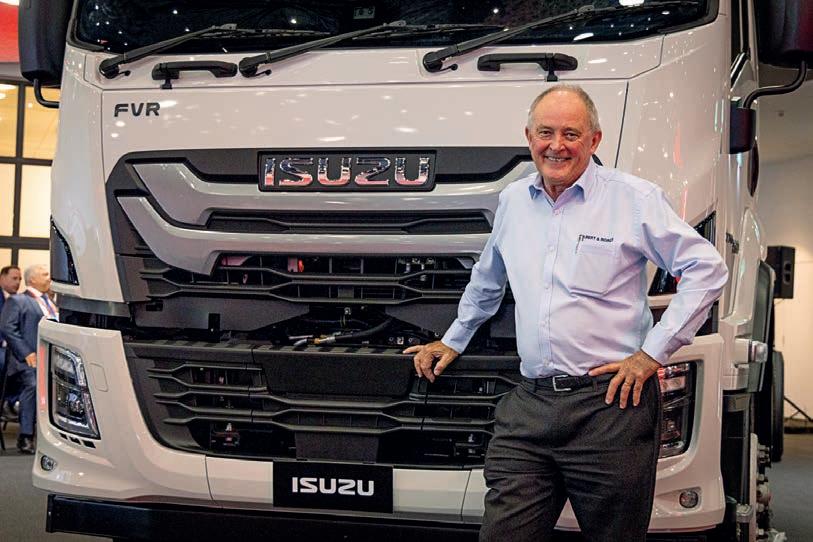
“Customers tell me they wouldn’t get the same level of support from other brands. Isuzu has always put the customer first, ensuring they stay on the road, and we’ll talk about everything else later.”
Gary is also a great believer in promoting skilled trades and providing career opportunities in the industry.
It’s well-documented that demand for skilled labour in Australia’s automotive industry is still high despite efforts to attract new talent.
“I always encourage people to consider a trade as a career,” Gary said.
“You don’t need to be a Rhodes Scholar to succeed in this field - all you need is drive, ambition and practical skills.”
Looking ahead, Gary remains energised with the upcoming launch of Isuzu’s new model line-up later this year.
“I think our customers are constantly evolving, and the products that we get are generally ahead of that evolution, which is always a good thing,” Gary mused.
“But they’ll be the first to let us know if we’re hitting the right spot.
“People used to fear technology, but now they embrace it and want to know more about their truck than ever before.
“It’s a challenge each day, but Isuzu isn’t just another truck brand; it’s a leader in every sense of the word. Gilbert & Roach Isuzu is poised for an exciting future.”

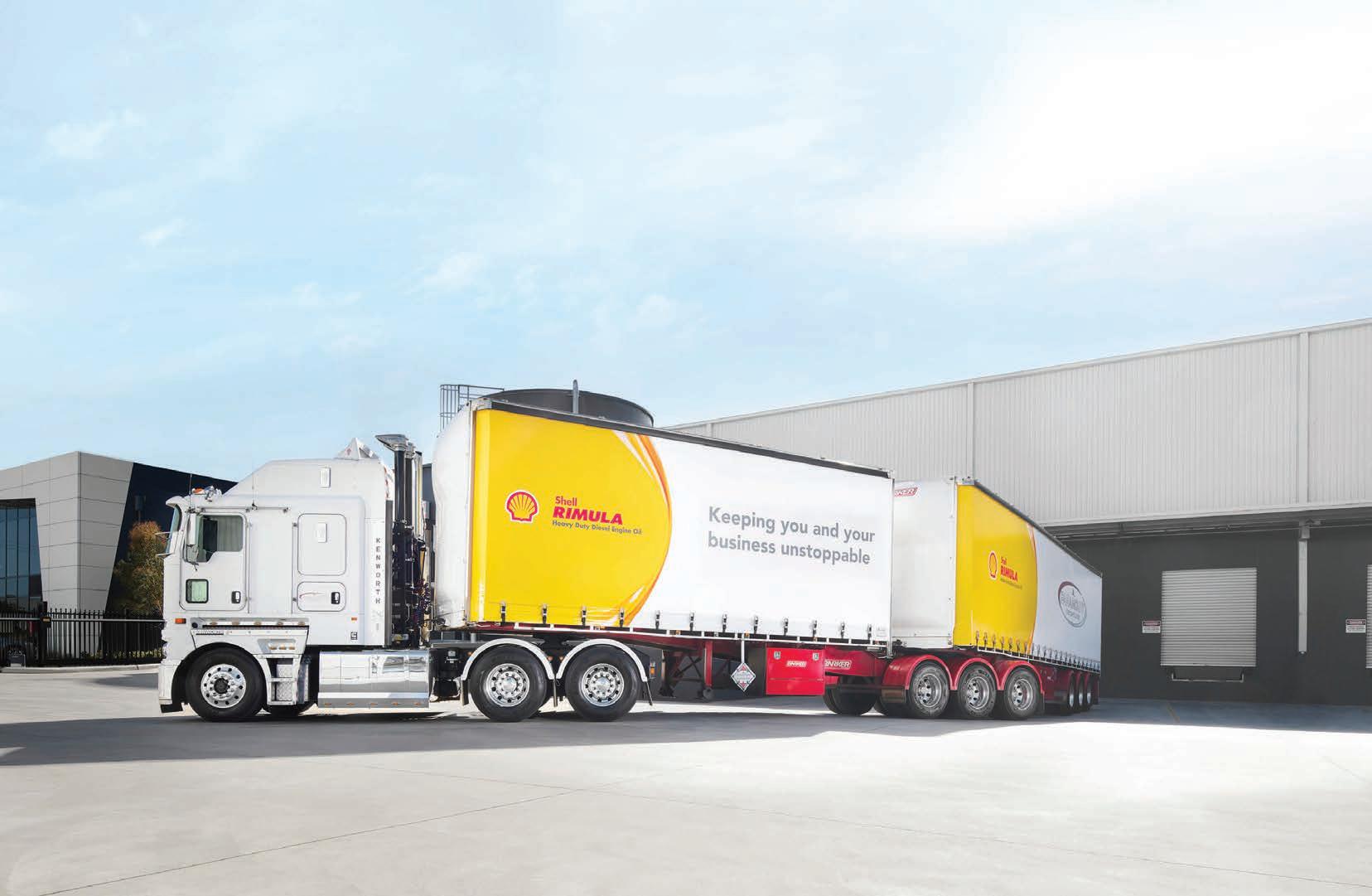


THE Women in Industry Awards celebrate the achievements of women across key industrial sectors, shining a spotlight on their leadership, innovation, and contributions to industries.
These awards offer a unique platform to honour women making a significant impact in fields such as manufacturing, engineering, construction, energy, resources and transport.
The Women in Industry Awards, which are presented this year on June 19 in Melbourne, provide a unique opportunity for businesses to get onboard and demonstrate their support of women in their workplace and their industries.

This year, prominent sponsors of the event include Atlas Copco Australia – sponsoring Rising Star of the Year, PACCAR Australia – sponsoring Safety Advocacy Award, Kenter Logistics – sponsor-
ing Excellence in Transport award, and Fulton Hogan
– sponsoring Woman of the Year award.
These companies know how important it is to celebrate the achievements of women, so that
they can be role models for future generations.
Several prestigious awards are still available for sponsorship, including Business Development Success of the Year, Mentor of the Year, Industry Advocacy Award, and Excellence in Manufacturing, Engineering, Mining, Construction, and Energy awards.
The benefits of supporting the Women in Industry Awards are immense. Sponsors gain high visibility, enhance their reputation as being supportive of women in the workplace, and network with influential leaders across industries.
Additionally, there are three key sponsorship benefits:
• Promoting corporate values
as an equal opportunity employer; with progressive policies encouraging women in management.
• Networking among peers and influencers in mining, manufacturing, engineering, energy and commercial road transport industries.
• Extensive media coverage and exposure through editorial and advertising.
Prime Creative Media has been proud to host the Women in Industry Awards since 2014, celebrating the women who are driving change in your industry and – in doing so – break down barriers and create new possibilities for the next generation.
These may be women you
work with, women whose achievements inspire you from afar, or women who are providing you with invaluable guidance and support. We believe their dedication and exceptionalism should be celebrated.
Get involved today in Australia’s most exciting celebration of excellence. Sponsorship opportunities close on May 16, with only one sponsor available per award.
THE Australian Livestock and Rural Transporters Association (ALRTA) celebrated its 40th anniversary with a gala dinner and awards night in Canberra on April 5.
The Rural Transport Rising Star Award was a tie between the two finalists: 23-year-old Isaac Davis from Southfork Transport in Scottsdale, Tasmania and 28-year-old Kyle Nicholas from Edmonds Transport in Naracoorte, SA.
The ALRTA and Kenworth also honoured Craig Congram from Finley, NSW as the Icon of the Road for 2025.
The Bruce McIver Award
for 2025 was presented posthumously in honour of Jack Mitchell from Western Australia, who was the founding Vice President of the ALRTA in 1985 and was a huge advocate for the livestock and rural transport industry in the association’s formative years.
Jack passed away in 1989, aged 57. The award was received by Jack’s son John Mitchell, who acknowledged his father’s hard work and his strong friendship with Bruce McIver.
The night culminated with a fireside chat with the founding legends of the ALRTA.
ALRTA Executive Director Anthony Boyle hosted a 40-minute reflection on the creation and journey of the ALRTA and its involvement in the industry.
Legends of the industry included Ross Fraser from Queensland, Gordan Martin from NSW, Peter Berwick from Tasmania, Gavan O’Sullivan from Victoria, Joe Sepos from NSW, and the first Executive Director of the ALRTA Robert Gunning.
The Rural Transport Woman of the year was awarded to Pauline Kearney from Barooga, NSW. Pauline started her
journey in the transport industry at just 15 years of age, washing trucks. Now with her husband Glen and three sons, they operate eight trucks, servicing all aspects of rural transport. Pauline has also had a long-time hands-on role driving trucks all over rural Australia.
To round out the gala event, the Livestock, Bulk & Rural Carriers Association of NSW (LRBCA) presented Joe Sepos a Life Membership. Joe heads up the JS Transport Group of companies which includes Stocktrans and was involved in the earlier fireside chat.



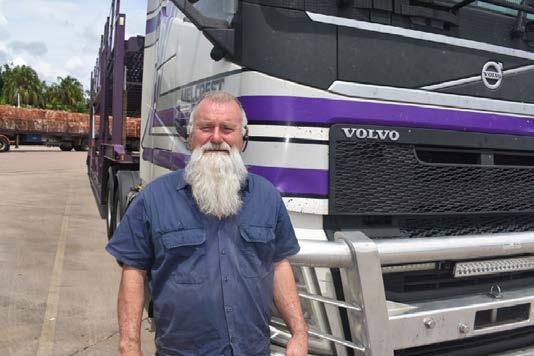
A FTER a long driving career spanning 43 years on the highway, Dave Sullivan said he had retired five years ago.
But you can never keep a good man with the road transport industry in his blood down, and since then Dave has driven part-time on at least five occasions for various periods. I saw Dave, 73, who works for Melcrest, in the driver’s seat of his Volvo parked at a Townsville roadhouse recently.
“I have brought up cars from Brisbane to drop off in Cairns and am heading to Rockhampton to get some more for Brisbane,” he said.
Dave was highly critical of the Bruce Highway with an emphasis on the 350km Cairns to Townsville stretch.
“There are potholes everywhere and I saw so many cars beside the road with damaged tyres,” he said.
A n enthusiastic AFL fan, Dave barracks for the
Melbourne Demons. Dave said he only stops at rest areas where he can get a good night’s sleep, but added, “There are not enough of them.”
As for when he will finally call an end to his long and successful career as a driver, Dave could not be certain when the curtain would fall on his long spell behind the wheel.
“I tried to retire, but here I am,” he said.
Dave mentioned that he had appeared in Big Rigs about 20 years ago when I had snapped his pic and yarned to him just north of Townsville.
So, when I got home and did a search of his name on my computer, it revealed it was back in 2004 when he was aged 53. Back then when we met, he had been checking out a minor mechanical problem on a Scania 143H V8 and was preparing to cart watermelons from Charters Towers for the Brisbane markets.
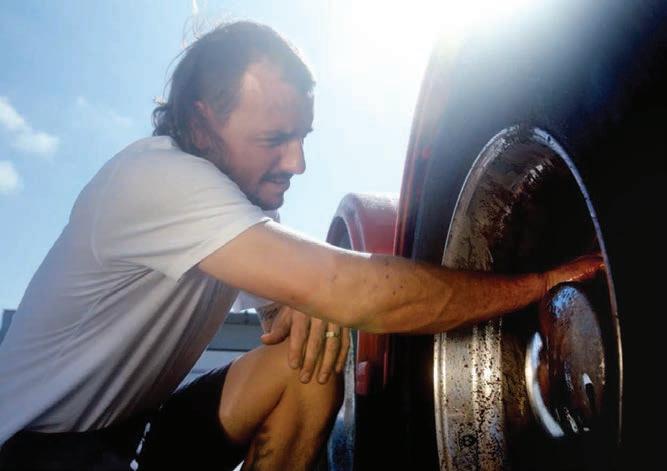
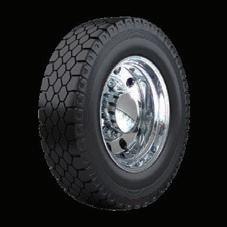

YOUNG owner-operator Tim Wyer is passionate about the road transport industry.
The 36-year-old, who runs Wyer Bulk Haulage out of Brisbane, hopes that many more young drivers will join the industry.
I saw Tim reversing his Mercedes-Benz Actros into a parking bay at the BP Cluden Roadhouse earlier this month and it was a precision manoeuvre.
“I have brought up white goods such as washing machines and fridges from Brisbane for businesses in
Townsville like Harvey Norman,” he said.
The Mercedes has an automatic gearbox and Tim said it was comfortable to drive.
“What I like about it is with cost-of-living expenses, it’s economical,” he said.
A driver for 10 years, Tim has had his own business for just over a year and loves life on the road.
“My dad Peter was a driver and also had a car yard and got me into the industry,” he said.
Tim likes stopping at the Richmond Roadhouse on
the western Flinders Highway when in the area.
But he rates the section of the Flinders between Hughenden and Richmond and the Gregory Development Road from Charters Towers to Clermont as amongst the worst he travels on.
Tim would like to see more rest areas for drivers with toilets and showers.
“But there is one near Cloncurry which is great,” he said. He added that he likes rugby league and is an avid supporter of the Redcliffe Dolphins in the NRL.
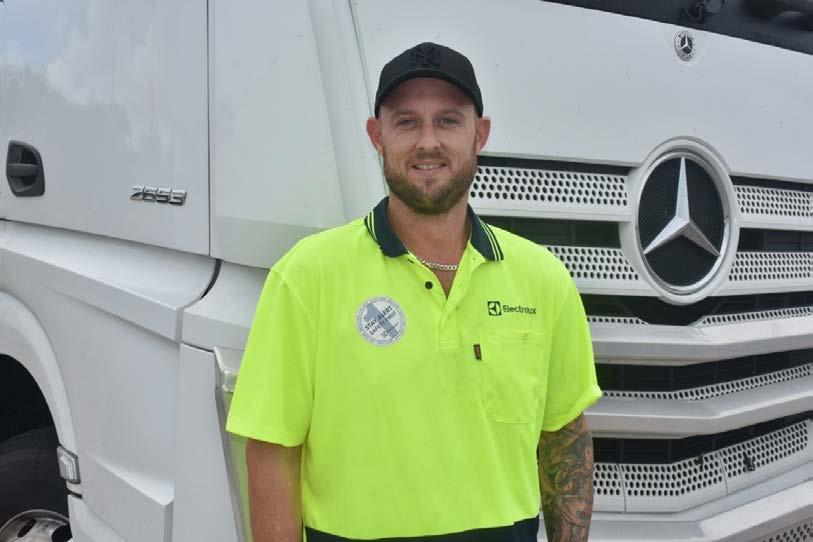







A “Thank-U truckies” addi-
tion to a “Welcome to Tully” sign beside the Bruce Highway acknowledges the great work our drivers do delivering food and supplies during floods.
Tully is 200km north of Townsville and 150km south of Cairns and is one of the wettest places in the country – in fact it’s been dubbed Australia’s wettest town.
When the Bruce Highway was closed after heavy rain and resultant flooding, trucks carrying goods were held up for long periods.
But when authorities gave the all clear for the heavy vehicles to get through, they soon had supermarket shelves replenished.
This pic was sent to Spy by a well known driver named Dippy Southern.
Fatigue or sleep deprivation?
In the past few months Spy has been sitting in roadhouse truck rooms and has spotted drivers who have fallen asleep on their chairs after eating.
This sparked a conversation between others about whether these lads were suffering f
tired after a hard day’s work.
Opinion was divided with one witness being certain they had sleep apnoea.
Another was just as adamant that it was a result of driver fatigue during a compulsory break.
There was a third opinion from another driver who said that anybody who is diagnosed with sleep apnoea could face a licence loss or suspension if the matter is medically reported.
One of the drivers woke up after about 40 minutes and I spotted him outside as he was heading to his truck.
So I asked the middle aged gent what was his take on it.
“I did have sleep apnoea some years ago and had treatment and don’t have it anymore. Today I was just buggered after driving the hours a llowable and it was good to have 40 winks,” he told me.
After hearing all of the chatter Spy consulted a sleep apnoea expert at a big local hospital: “Even if drivers are diagnosed with it after a test in hospital, they won’t lose their licence if they abide by doctor’s advice and use a ResMed machine when they
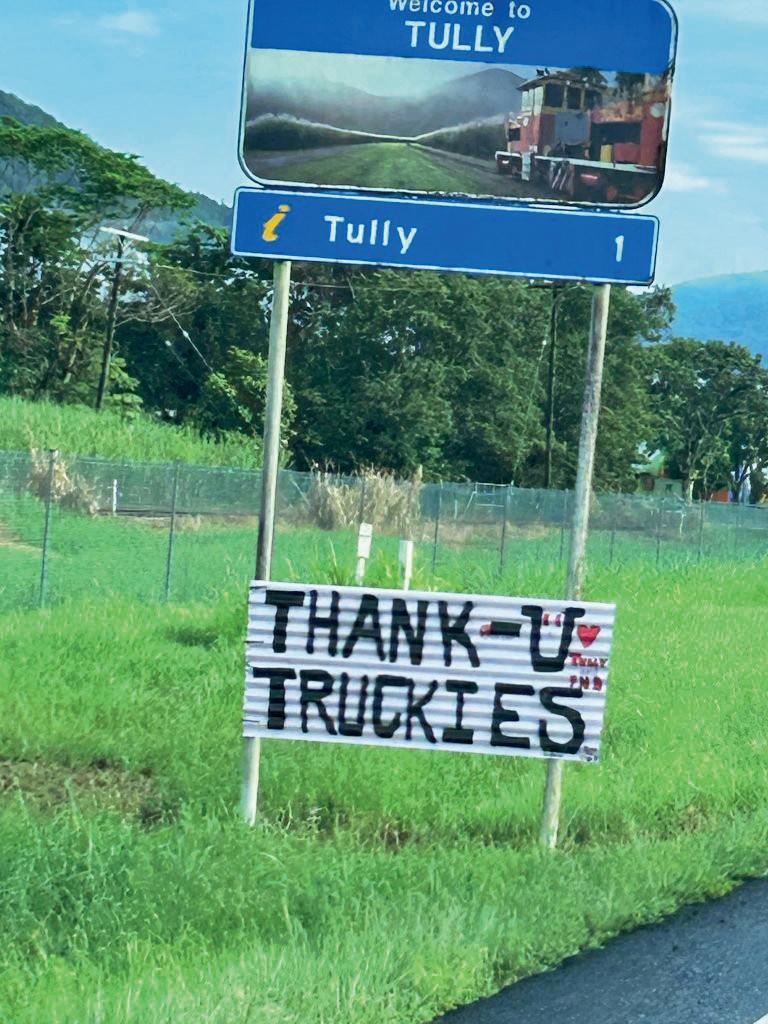
Drivers are always on the lookout for tasty and value priced food when away from home.

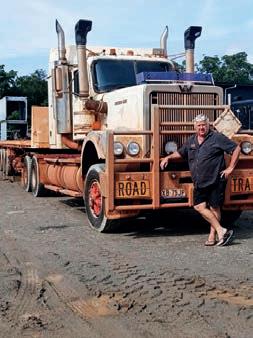
amaga on the Northern Peninsula area of Far North Queensland likes stopping at the remote Musgrave Roadhouse.
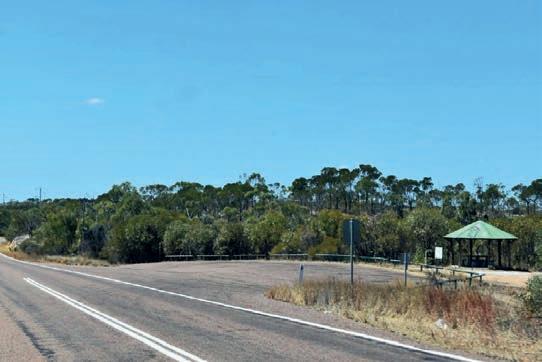
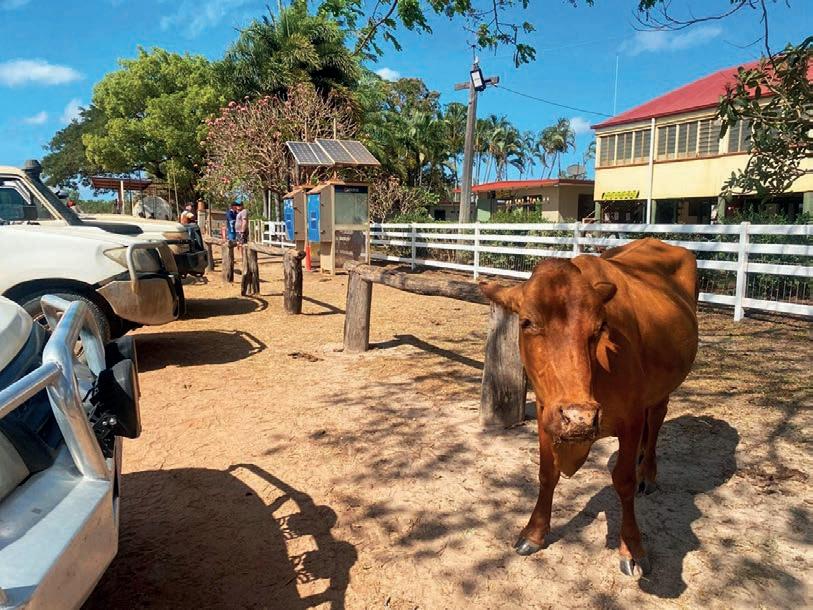
Veteran small fleet own er Jim Foody from remote

“They have the best toasted ham, cheese and tomato sandwiches you would find. I would recommend them,” he said.
A NSW driver who frequents many roadhouses around the country said he had a great breakfast at the Roma Roadhouse in Queensland.
He sent Spy a pic of his food and it did look inviting and was fairly priced at $20.99.
Roadhouses which look after our drivers are sure to get return custom and word of mouth business.
Wide streets query
After a story appeared in a recent column about a great rest area with excellent facilities at Coolgardie in WA, drivers have contacted Spy with a query.
These are interstate truckies who don’t know the history
of the historical former mining town.
They have wanted to know why many of the streets there are so wide.
“The roads were made extra wide in order to have enough room for turning the camel trains around in the early days,” a Council spokesman said.
Obviously long before an era when road transport started.
Numerous truckies who travel the notorious Flinders Highway in outback Queensland have called on authorities to build a toilet at a rest area at the top of the Burra Range. It is located between Pentland and Torrens Creek and is basically only a short term stop for heavy
vehicles. There is parking space for one or maybe two trucks and it has shaded tables and seats.
But drivers reckon they have seen car travellers stop there and have a piddle which leaves an odour.
So a cheap set of toilets would be great at a rest area which is nestled amongst the Great Dividing Range.
A veteran owner-operator aged in his mid-60s was well and truly angry when he had to obtain a dangerous goods permit to carry concentrate.
“I went to a doctor to get my health signed off and the appointment lasted less than five minutes and cost me $900,” he said. He had to add that to his load charge so wasn’t out of

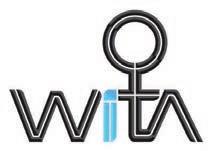


pocket but he still reckons the cost was steep.


Beware in floods
As a Northern Territory driver was heading along the Barkly Highway near Soudan Station he noticed a car with three young people inside overtake him at great speed.
A lot of rain had fallen and the truckie thought it would only be a matter of time be fore something happened to that car.
“Just up the road the car went through some shallow water on the road at speed and ended up in a lagoon nearby,” he said.
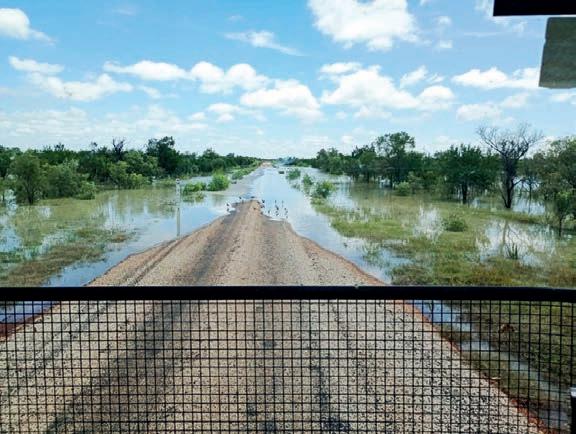
Luckily nobody was hurt but it could have been a tragedy. It was about 120km from the Queensland border and the truckie said water was right up to the highway near the Ranken River Bridge.
Spy was also sent a pic by a driver of water lapping the road at the Cresswell River which is about 200km from the Queensland border.
Trucks crossed it with extreme caution.
The truckies also reported a lot of pigs, kangaroos, goannas and snakes crossing the road.
“There was many more than normal,” he said.
Other drivers reported running into birds which flew into the trucks and were very messy to clean up.
Prime steak for struggling driver
We all know that many owner operators are on struggle street with fuel and other cost pressures.
Many who stop at roadhouses seek venues with value priced meals and a lot more take their own food whilst away using one of those gas cookers or a microwave.
Spy knows of one such operator who is always complaining about doing it tough.
So imagine my surprise when I was standing at a butcher shop next to him and

saw what he purchased.
This lad bought several pieces of prime Wagyu fillet steak at the beefy price of $135kg.
Being a curious type I asked if he had won some money on lotto.
The answer was that he had collected $5000 plus from a winning Keno flutter.
One of the questions I ask truck drivers I have interviewed at random over the past 30 years is about their favourite hobby.
In all that time Spy has never found a truck driver who grows and tends flowers.
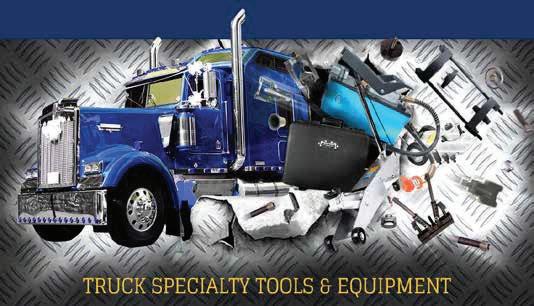






That changed in early April when a Mount Isa heavy vehicle driver told me about his flower passion.
“I have lots of desert roses and find them great to look at when I come home from a long trip in the truck. They are soothing,” he said.
I asked the lad to send me some pics of them and quicker than you could say “blooming beauty” they arrived on my email.
So what is his favourite colour of all the roses he loves?
“It would have to be pink but there are many colours,” he said.
But how did the driver get hooked on flower power when his job relies on horsepower?
“Five years ago I was picking up some rubbish to be dumped and found some seedlings in pots and took them home and have been into them ever since,” he said.
Food connoisseur Rhiannon Anderson will be a contestant in the new season of the popular television program MasterChef Australia. Rhiannon is the wife of Townsville owner operator Dean Anderson and assists with the administration side of the business.


After Rhiannon finished second in the 2023 final, she appeared on the front page of the August 4 edition of Big Rigs standing in front of their yellow truck.
Rhiannon confirmed to Bigs Rigs that she will be competing against 20 contestants on the Channel 10 program.
Rhiannon battled a major health scare after just missing out on the $250,000 top prize in season 15. Channel 10 did not advise a date for the program to appear on our television screens but did day “it’s coming soon”.
















a heavy vehicle driver’s licence gives a driver the legal right to operate large trucks and commercial vehicles – but that’s where the formal recognition ends.
Despite the enormous responsibility that comes with operating heavy vehicles on public roads, a licence is not a formally recognised qualification.
It’s just a legal entitlement, and says nothing about driving skill, experience, or professionalism.
It doesn’t tell anyone about career background, reputation, or how a driver handles tight schedules at all hours.
This issue adds to a perception problem in Australia’s transport industry as it deals with safety concerns, worker shortages, and lack of professional development.
A veteran truckie with decades of experience and millions of highway kilometres has the same value as someone who passed their practical driving assessment two weeks ago.
Not qualified
A licence represents the bare legal minimum to do the job. It only confirms that basic standards were met on one specific day.
Other trades like plumb-
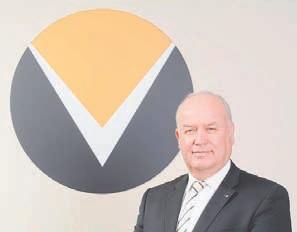
ing, electrical, or nursing require nationally accredited qualifications that maintain standards and support career growth.
In the real world, getting a job with a trucking company depends on reputation – both yours and theirs.
When you call about a job, they’ll likely ask where you’ve worked before, how many kilometres you’ve done, and how soon you can start.
Having the right licence just gets you in the door – it doesn’t prove experience or capability.
Australia’s bus industry is known to excel at preparing new drivers, offering comprehensive induction and training for the challenges they’ll face.
In the road freight sector, heavy vehicle road safety and awareness training during induction is provided to new entrants at a sub-set of major transport companies.
Smaller outfits, squeezed by extremely thin margins, often can’t afford to provide this crucial extra step. So, the bigger problem remains – there is no national framework for advancement.
Why it matters
This lack of differentiation has real consequences:
• Experienced drivers get no formal recognition of their skills, making it hard to stand out.
• Employers can’t rely on a licence to judge a driver’s ability – they’re left guessing or creating their own training.
• Without qualifications, there’s little incentive to improve skills or stay in the industry long-term.
• A decade-old licence doesn’t
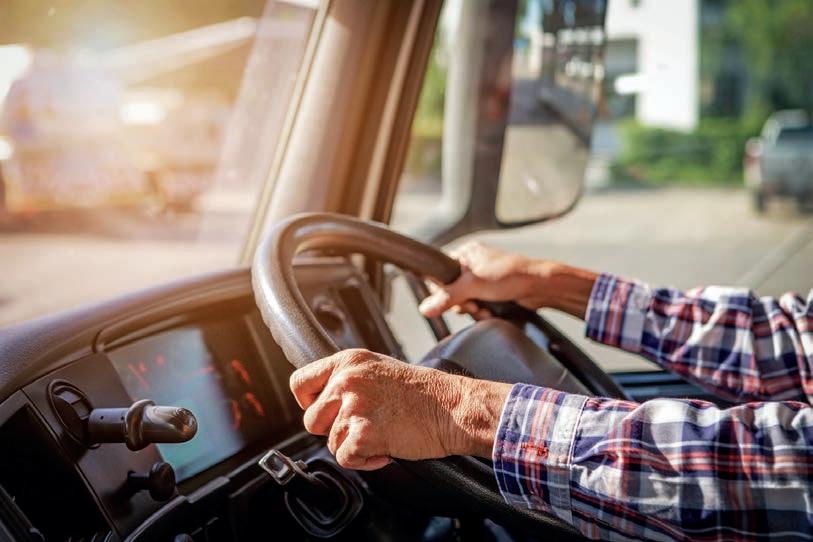
guarantee current knowledge or safe practices.
An evolving industry
Today’s heavy vehicle drivers do far more than just drive. They manage compliance, fatigue, load restraint, navigation systems, customer service, and much more.
In public transport, the demands are even more complex. Yet the licensing system hasn’t kept pace with these evolving roles.
Add a growing driver shortage and aging workforce, and professionalising the industry becomes urgent.
If we want to attract, train, and keep talent, we need a better system that reflects the true complexity of the job.
A national framework
We could create a qualification
pathway - ideas such as this have been suggested for many years.
A Certificate III in Driving Operations already exists and readily available through the Vocational Education and Training (VET) system.
Or we could develop industry apprenticeships and cadetships further.
We could improve on existing “Heavy Vehicle Learning Modules”.
Develop them into a structured qualification covering essential skills in a modular way to include specific topics such as:
• Advanced vehicle handling (safe hill descent, driving in tough conditions)
• Road safety laws and your legal obligations
• Professional fatigue management, load restraint, and
route planning
• Practical assessments and recognition of prior experience
• Specialised freight handling (dangerous goods, livestock, oversized loads)
This wouldn’t replace a heavy vehicle licence – it would enhance it, offering a clearer picture of capabilities and professionalism.
Training the trainers
Trainers face a constant challenge – maintaining professional standards without a formal framework for doing so. W hen training instructors, it’s crucial to emphasise the difference between a licence and a qualification.
Without national standards that address this issue, trainers must compile their own methods to help develop a
threatens the sustainability and efficiency of our industry.
Attracting new drivers to the industry is paramount.
During the conference, we explored various strategies to address this challenge. Key among these is the need for targeted recruitment and retention initiatives.
THE recent VTA State Conference at Silverwater Resort in San Remo was a resounding success, bringing together industry leaders, policymakers, and stakeholders to address the pressing issues facing our industry.
Our “Safety First: Empowering People, Boosting Productivity, Shaping Transport’s Future” theme resonated deeply with all attendees, highlighting our collective commitment to enhancing productivity and maintaining the safety of our workforce.
One of the most critical challenges discussed was the ongoing shortage of heavy vehicle drivers.
The delegate survey results underscored the severity of this issue, with 64 per cent of operations reporting a shortage of 1-7 drivers, and smaller percentages indicating even larger gaps.
This widespread shortage is a significant concern that
We must create an appealing career path for potential drivers, emphasising the stability, opportunities for advancement, and the critical role they play in our national economy.
Training and education also emerged as vital components in our efforts to attract and retain drivers.
By offering comprehensive training programs and support, we can equip new entrants with the skills and knowledge they need to succeed. Additionally, addressing the high costs associated with obtaining and maintaining heavy vehicle licences is crucial.
The VTA has been a strong advocate for reforming the heavy vehicle licensing system to be based on training rather than experience. This approach would allow new drivers to enter the industry more quickly and efficiently, without the lengthy wait times currently associated
with gaining experience.
By focusing on rigorous training programs, we can ensure that new drivers are well-prepared and competent, while also addressing the urgent need for more drivers in the industry.
The conference also highlighted the importance of familiarising our workforce with the Heavy Vehicle National Law (HVNL) regulations.
While 50 per cent of respondents indicated they are somewhat familiar with these regulations, nearly 20 per cent lack awareness. This gap in knowledge can impact compliance and operational efficiency. Therefore, better education and communication regarding HVNL regulations are necessary to ensure all operators are well-informed and compliant.
Discussions also provided valuable insights into the challenges of obtaining and maintaining heavy vehicle licences.
The survey indicated that 63 per cent of respondents face high costs, 17 per cent find the process lengthy, 11 per cent lack training resources, and 9 per cent face other challenges.
Addressing these issues is essential to make the licens-
driver’s professional skills. In the limited time trainers have with licence applicants, they must decide how much to cover beyond basic operation – extra things such as load calculations, scheduling, customer service, and driver assist technologies to name a few. We need qualifications that transform their role from licence-test preparation to developing recognised industry professionals.
Our economy relies on skilled truck and bus operators, and the trainers who develop them.
Both deserve better recognition in this crucial role in Australia’s supply chain.
Let’s get to it!
Formal qualifications have been suggested many times to modernise our transport sectors and restore pride in the profession that keeps Australia moving.
I suggest, dear reader, that we support the Review of the National Heavy Vehicle Driver Competency Framework (HVDCF) which is tackling this very important issue on a national scale - check HVDCF website at Austroads.gov.au Search “Driver Competency Framework” for information and ongoing updates.
Our economy depends on truck drivers, and the trainers that train and assess them – they both deserve recognition, structured growth, and professional respect.
Until then, the heavy vehicle licence remains just that – a ticket to ride, not a true measure of skill, attitude, and experience.

ing process more accessible and efficient for aspiring drivers. In addition to these discussions, the conference featured sessions on risk management and planning for the future.
Speakers shared their expertise on cybersecurity, AI integration, and the future of transport. Notably, 50 per cent of respondents feel very prepared to handle cybersecurity threats and integrate A I technologies, while 39 per cent feel somewhat prepared. This readiness is encouraging, but the 11 per cent who feel unprepared may benefit
from additional support and resources.
The conference underscored the importance of addressing the heavy vehicle driver shortages through targeted recruitment, comprehensive training, and financial support.
By familiarising our workforce with HVNL regulations and adopting sustainable practices, we can enhance compliance and reduce our environmental impact.
The insights gained from the conference will undoubtedly shape the future of our industry, ensuring that we continue to move goods ef-
ficiently across the country and keep our supply chains intact.
VTA State Conference 2025 was not just an opportunity to learn from industry experts but also a platform to connect with peers and foster a collaborative environment. By working together, we can address the driver shortages, enhance safety, and ensure the long-term sustainability of our industry. Our commitment to empowering people and prioritising safety will pave the way for a brighter future for the transport sector.

AT the National Heavy Vehicle Regulator (NHVR), we are proud of our continued efforts to play our role in educating road users about heavy vehicle safety.
It’s why our latest road safety campaign – It’s Black and White: We All Need Space – seeks to alert drivers of the need to stay safe a round Oversize and Overmass (OSOM) vehicles.
A nyone involved in the heavy vehicle industry knows navigating OSOM loads is a challenging and potentially dangerous task not only for the driver, but for also for the accompany-

industry, jurisdictional partners and our own NHVR Safety and Compliance Officers, we were alerted to growing concerns about driver behaviour when encountering OSOM loads.
Our team have reported other motorists not following escort vehicle instructions, attempting to over-
just doing their job of keeping everyone safe. Sadly, there have been a number of high-profile incidents involving OSOM vehicles over the past decade which have resulted in tragic outcomes – and with a growing number of major construction projects in the pipeline likely to lead to an
increase in such movements, we felt it imperative to invest in this space.
Our new campaign seeks to capture the attention of drivers by comparing these enormous “superloads” –which can be everything from wind turbines, mining equipment, electrical transformers or tunnel boring machines – to other “huge” things.
Superload movements can weigh as much as 583 giraffes (up to 700 tonnes), stretch as long as the height of the Melbourne Star (120 metres) and be as wide as 10 AFL players lined up side by side (almost 6 metres) – with some OSOM loads even bigger. We want to drive home the message that just as you wouldn’t want to go headto-head with a heard of 500plus giraffes weighing more than 700 tonnes – you also don’t want to get on the wrong side of an OSOM vehicle.
Ensuring these critical safety messages reach as many people across the country as possible is a key component of our strategy.
It’s why we have explored multiple partnerships over the years – including with former NRL star Sam Thaiday, comedian Jimmy Reese and musician James Blundell.
For this campaign we were excited to partner with the Collingwood Football Club, who have worked with the NHVR to promote the safety message.
W hat we know is by educating light vehicle drivers about what actions they need to take when they encounter heavy vehicles on the road, we can get better safety outcomes for both industry and t he general public.
A collision or near miss between a major OSOM load a nd another vehicle has the potential for catastrophic consequences – a scenario no one wants to see. It is up to all of us to slow down, stay patient and follow instructions from the pilot and escort vehicles, to ensure everyone makes it home safely.
For more information about the campaign visit: nhvr.gov.au/blackandwhite

AS we are heading into a federal election, and this may be one of the most important elections that we are facing as Australians, we need to be aware of the facts and promises of all parties.
When we have all the available information, we can make clear and informed decisions, on what each party is planning for our industry, for our economy and for our country.
I do not think that it has
ever been more important that we are well informed and make decisions on the promises and details provided. I do not think that we can blindly vote on the way we have always voted, or the way our parents voted. But we need to be clear on our values, and what will be in the best interests of our families and our future.
We need clear economic decisions, clear regulatory decisions, and clear decisions on immigration, housing, foreign policy, and our judicial system.
For our industry, we need clear decisions regarding fuel excise, and other decisions that will affect our cost of doing business.
We need decisions made about our national licencing
system and driver training so that no one is discriminated against, and no one is given preferential treatment; this will lead to safer roads for all.
We also need an independent investigation into all fatal heavy vehicle accidents, the same as there are for air and rail accidents.
This is so that we can have specific information so improvements can be made, and safety standards can be improved and recommendations implemented.
We are looking forward to the Australian Trucking Association TA25 in Adelaide, Transport Women Australia Limited will be hosting their pre-convention lunch and hosting a panel session on the first afternoon of TA25.
We also have our nominated

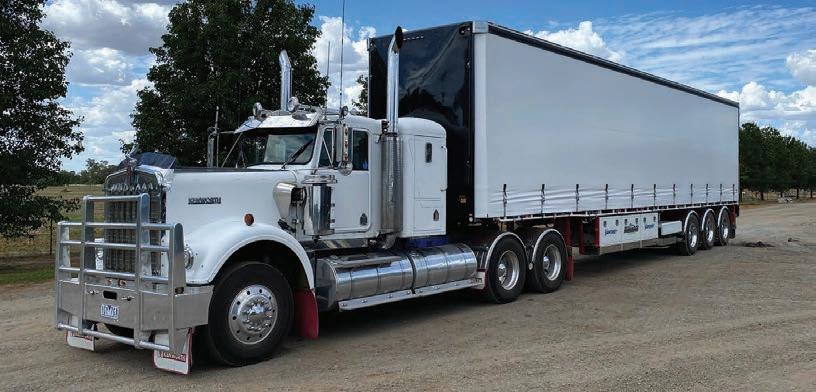
member Ann Lopez as a finalist in the Woman of the Year, a nd our Corporate Member, Formula Chemicals has finalists in the Outstanding Contribution, Driver of the Year and Woman of the Year categories. We wish them all the best of luck.
We look forward to our Brisbane Truck Show Breakfast on the first morning of t he truck show on May 16. Tickets to the breakfast are selling fast and include a ticket to the truck show in the price of the breakfast.
Nominations are also open for our Young Gunnette Award and our Dream Maker Awards; the nomination forms for these are available through our email, chair@ transportwomen.com.au.
Coralie will represent us at
the Alexander Truck Show on the June long weekend; so please head along to the stand, pick up some goodies and talk to Coralie and Leah about our work.
Everyone is looking forward to the Transport Women Unite Red Ball which will be held at the Festival of Transport at Alice Springs in August. This is where our Dream Maker awards will be presented, for the third year.
A s we slide into winter and daylight savings has ended be sure to check on your friends who may be affected by SADS or other signs of depression.
Be sure that they know where they can reach out for assistance, especially with Healthy Heads In Trucks And Sheds. These programmes are available, and
information can be obtained through their website. Sometimes someone only needs to talk to but there are times they need more than we can provide and more professional help and assistance. We need to be able to steer them in the right direction to ask for that extra assistance.



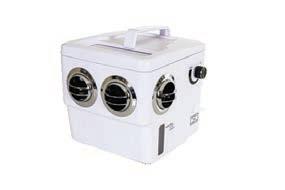


WITH so many trucking events coming up, here are some dates to add to your diaries.
APRIL
Trucking Australia
April 28-30
Adelaide, SA new.truck.net.au/ta
Trucking Australia is the industry’s premier annual event and a great opportunity for industry professionals to meet face-to-face and collaborate on potential solutions.
Join over 400 other delegates at the 2.5-day conference, which presents ample networking opportunities to meet industry experts and a chance to build new connections.
MAY
Brisbane Truck Show
May 15-18
Brisbane Convention & Exhibition Centre, QLD brisbanetruckshow.com.au
The 2025 Brisbane Truck Show is the southern hemisphere’s largest festival of all things trucking, with over 30,000 square metres of exhibitions showcasing the latest trucks, trailers, technologies, and parts and accessories available on the Australian market.
The 2025 show from May 15-18 will be part of Truck Week, a week-long festival incorporating an array of activations in nearby South Bank Parklands, including the Premier Boxing Series, Australia’s Best Show N Shine, and The Depot careers and entertainment hub – plus the Heavy Equipment and Machinery Show at RNA Showgrounds and the Heritage Truck Show at Rocklea.
Camp Quality Convoy Adelaide
May 25
Victoria Park, Adelaide fundraise.campquality.org. au/convoy/adelaide
Camp Quality’s Convoy is a fun way for anyone who drives a truck to show their support for kids facing cancer and their families. Supporters can cheer on our Adelaide Convoy, as we travel a 36km route around Adelaide and Port Adelaide, starting and finishing at Victoria Park.
The event venue will host a

free Family Festival packed with entertainment and experiences catering for kids and adults alike.
Scenic Rim Truck Show
May 31
Jimboomba State School, QLD scenicrimtruckshow.com
Get excited for the Scenic Rim Truck Show! Held from 10am to 6pm, the show will feature plenty of trucks along with market stalls, rides, entertainment, raffles and a live auction. A ll profits will be donated to the KIDS Foundation.
JUNE
Alexandra Truck, Ute and Rod Show
June 7-8
Alexandra, VIC alexandratruckshow.com.au
The Alexandra Truck Show is back on the King’s Birthday weekend in June this year, with a Sunday Show ‘n’ Shine on the town’s main street, as well as live music, a Victorian woodchop tournament, exhibitions, trade displays, kids’ amusements and a raffle. Come down on Saturday for the local markets, a convoy and truck drivers’ memorial. For more details email trucks@alexandratruckshow.com.au.
JULY
Gold Coast Truck Show
July 27
Mudgeeraba Showgrounds, QLD
Facebook: Gold Coast Truck Show
There will be plenty of trucks, cars and bikes on display, with show awards taking place across all three vehicle categories. The day will have lots to
ily, with entertainment provided by cover band Pheonix R ising, who will rock it out on centre stage.
AUGUST
Casino Truck Show
August 2
Casino, NSW
Facebook: Casino Truck Show
The date is set for this year’s Casino Truck Show, one of the biggest events in Australia’s trucking calendar. Tens of thousands of people and hundreds of trucks are expected to descend on the town as usual – last year, truck entries had to be capped at 600. Attendees can look forward to a great day out with food, trade stalls, kids’ amusements and much more.
Festival of Transport 2025
August 28-31
Alice Springs, Northern Territory Facebook: National Road Transport Museum
Held at the National Road Transport Museum’s hometown of Alice Springs, the four-day Festival of Transport 2025 will host various events including the Shell Rimula Wall of Fame Induction, Transport Women Dream Maker Award, Truck Drag Racing and a street parade.
NatRoad Connect 25
September 11-12
Shepparton, VIC natroad.com.au
NatRoad’s annual conference gives you the opportunity to connect with industry rep-
resentatives, operators, Na tRoad members and partners to receive practical operational information and advice. Save the date to your calendar and keep an eye on their website for updates closer to the time.
Camp Quality
Convoy Perth
October 12
Perth Hockey Stadium, Bentley fundraise.campquality.org. au/convoy/perth
Camp Quality’s Convoy Perth is a fun way for anyone who drives a truck to show their support for kids facing cancer and their families. Supporters will cheer on our Convoy, as we travel a 53km route around Perth City and Osborne Park, starting and finishing at Perth Hockey Stadium. The event venue will host a free Family Festival packed with entertainment and experiences catering for kids and adults alike.
There will be food vans, kids’ rides, face painting, roving entertainment, live music, fundraising awards ceremonies, and the chance to cheer on the returning Convoy.
Plus, you can check out all the trucks and vehicles at the Show ’n’ Shine after the Convoy returns.
Brisbane Convoy for Kids
November 1
Brisbane, QLD brisbaneconvoyforkids.com.au
The Brisbane Convoy for Kids is back on November 1, travelling from Larapinta to the Redcliffe Showgrounds. Once

it arrives, a family fun day will take place, with a wide range of activities on offer including live entertainment, auctions, food stalls, free kids’ rides, face painting, animal petting, magic shows, and a night lights display. Convoy participants will also compete in a range of categories, with awards handed out on the day.
Ulverstone Truck Show
November 1 Ulverstone Showgrounds, Tasmania Facebook: Ulverstone Truck Show
Held as part of the Thank You Day Show, a fundraising event to raise money for Beyond Blue and New Mornings, this year’s truck show component will feature a Kenworth focused show alongside the usual truck show. There will be prizes for both shows and lots of giveaways. The event starts at 9am.
Mullumbimby Truck Show
November 8
Mullumbimby, NSW mullumbimbyshow.org.au
Held in conjunction with the annual Mullumbimby Agricultural Show on the second Saturday of November each year, you won’t want to miss the Mullumbimby Truck Show! This event will feature a truck parade through the town, sideshow alley, kids’ rides, food vans, full bar facilities and live music. Other features will include horse and cattle events including trotting.



Ballinger Memorial Truck Show
November 15
Bathurst Showgrounds NSW bathursttruckshow.com.au
The Dane Ballinger Memorial Truck Show is back. This event brings together truck lovers, families, and the local community to remember Dane Ballinger and celebrate the trucking industry he loved.
Illawarra Convoy
November 16
Illawarra, NSW illawarraconvoy.com.au
Touted as the largest truck and motorbike convoy in the Southern Hemisphere, the Illawarra Convoy raises funds for individuals and families affected by potentially life threatening medical conditions, and the charities that work with these people, and local hospitals.
Castlemaine Rotary Truck Show
November 29-30
Castlemaine, VIC rotarycastlemaine.org.au/ page/truck-show
Held at Campbells Creek Recreation Reserve and organised by the Castlemaine Rotary Club, this year’s event is gearing up to be bigger and better than ever. Attendees can expect plenty of well-presented trucks on display, as well as food, a licenced bar, kids’ rides, free health checks and live music.
Have you got an event you’d like included in the next Save the Date? Email all the details to danielle.gullaci@ primecreative.com.au.






AUSTRALIAN MADE with AUSTRALIAN STEEL


















BY DANIELLE GULLACI
TIMMY Mitton, 33, says he always knew he was destined for the transport industry. “I was born and bred around trucks. From day dot, it was all I wanted to do and what I was keen on – anything with a steering wheel, anything that was burning diesel,” he told Big Rigs
Timmy’s parents Steve and Judy Mitton ran their own trucking company for many years, based in Grenfell, New South Wales. He fondly recalled the time spent travelling alongside his father in his Ford LTL.
Sadly, Steve passed away about 10 years ago, shortly after Timmy began making his own way into the industry he loved.
“Mum and Dad had a couple of trucks over the years. Dad started driving in the 1980s when he was in his early 20s. He started out driving for a few companies, then bought his own trucks.”
And Timmy has followed those same footsteps, also taking his own sons for trips in the truck on weekends and school holidays, any chance he can.
“Growing up, if I wasn’t
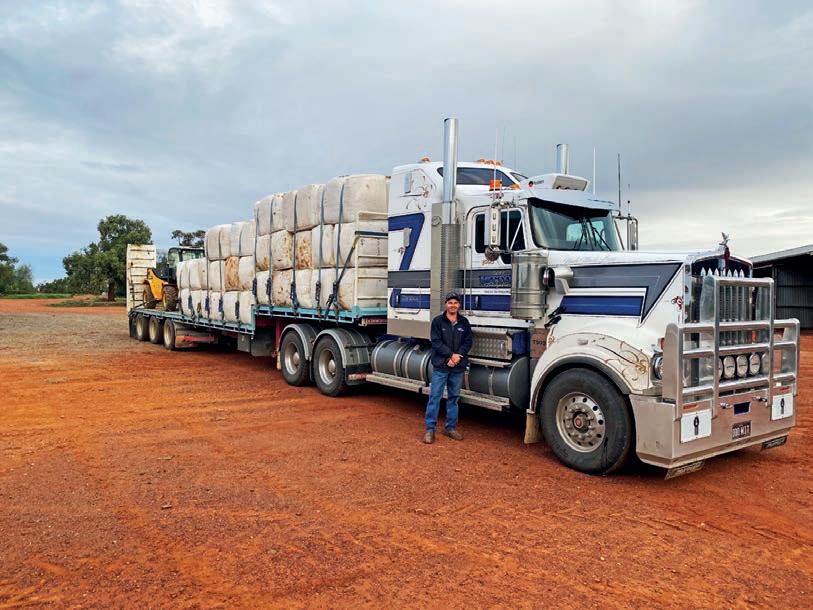
self be around it. I’d go and wash trucks and jump in the passenger seat with Dad and with many of his mates whenever I could.
“I count myself as lucky to have had that sort of upbringing. Being raised in the country, you get to do those sorts of things, where you learn the fundamentals of it all.”
Some of Timmy’s earliest memories include being in the truck with his father as a fiveyear-old, in a line-up at har-
to northern NSW for harvest, and then Mum, my sister and I would go up there too so we could spend time together,” said Timmy.
“Dad had trucks and headers, so if I wasn’t around the trucks, I was around the headers. He used to do general freight, hay and wool, which is the same sort of thing I do now.
“I also went out with Dad’s mates, and also mates of mates. I got to get a feel for stock carting too because a mate of mine
was driving. That was when I was about 14-15. I’d wash his crates for him and there were a few other guys whose trucks I would wash every week.
“Dad didn’t teach me to drive because he joked that he didn’t want me to get into trucks, but a good mate Mat taught me when I was about 15. Mat ended up being a groomsman at our wedding, and is godfather to one of our children,” Timmy added.
“He used to let me drive in
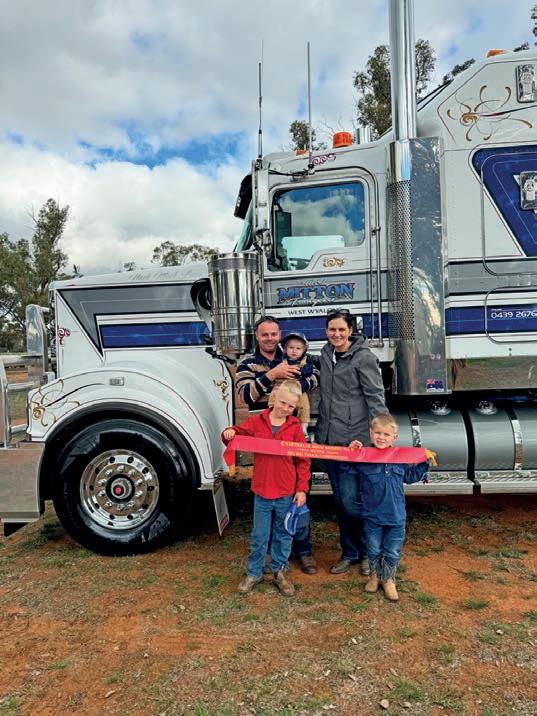
the dark, on the dirt. It was generally empty but gave me a good feel for the truck.”
Though there was never any doubt in Timmy’s mind that he would end up working in the trucking field, his parents had wanted him to first get a trade, so he followed their wishes.

“I worked for Country Energy doing an apprenticeship as a linesman. I probably should have gone for a welding or mechanical apprenticeship, but I jumped on the
first one I could get so I
then move into trucking,” explained Timmy.
“I used to take my annual leave from there to drive at harvest. I was very fortunate to have a local company give me a start, with no experience, to drive for them at harvest. While you didn’t do big kays, it gave you plenty of loading and unloading, opportunity to load correctly etc, all while adding to your experience.
“This highlighted my enthusiasm, and after four years I finished that linesman apprenticeship and got straight in the truck for a trip to Newcastle.
“Dad used to say don’t get into trucks, but it’s been a good career choice I think.”
Timmy spent the next five years doing tipper work, carting lime, gypsum, fertiliser and grain, before taking the plunge and going out on his own.
Based in West Wyalong, in NSW, his business is called T&N Mitton Transport, which he operates with his wife Neeka by his side. Timmy travels across the state, as well as occasional trips into Queensland, Victoria and South Australia.
He’s behind the wheel of a 2022 Kenworth T909, which he’s had since new. The work is centred around the agricultural industry and includes wool, hay, general freight and farm chemicals.
“I have two drop decks with ramps, a flat top and an A-trailer so I can cater to what we need for the job,” Timmy said.


As a father of three young boys – Nash (8), Mack (4) and Lane (16 months) –Timmy had his T909 decked out with a double bunk, so he can take the kids with him where possible.
“Nash is truck-mad, he’d have his licence tomorrow if he could. We had his birthday in the truck about three years ago for a trip to Geelong. We
brought the presents with us and Facetimed Mum from the truck!”
Asked what he enjoys most about the role, Timmy replied, “I get to do the driving, operate the machinery, and I get to talk to people a fair bit.
“It’s great to meet the farmers, who come from all different walks of life – and they all have different stories to tell.”
HIGH school students and other job seekers from across South East Queensland will get the chance to explore career opportunities available in the automotive industry at a free Automotive Careers Expo in Brisbane on May 22.
Motor Trades Association of Queensland (MTA Queensland) has partnered with Capricorn to host the event at the Brisbane Showgrounds which gives local students, and others, the chance to connect with trucking businesses, and other sectors, who are offering career pathways.
With rapid advancements in technology and an increasing demand for skilled professionals, the automotive industry is facing a significant skills shortage.
In Capricorn’s State of the Nation Report in 2024, 54 per cent of business owners from the automotive industry surveyed said one of the biggest challenges they faced in running their business was finding good staff (including apprentices).
The report also found owners weren’t just sitting on their hands waiting for someone else to solve the issue with a pipeline of talent.
Thirty-seven per cent said they were either extremely or very likely to take on an apprentice in the future. This makes it even more important to engage the next generation and spark interest in automotive careers.

MTA Queensland CEO Rod Camm stressed the importance of apprenticeships in securing the future of the industry.
“Apprentices are the future business owners and leaders of the automotive sector. Training apprentices is essential for the long-term sustainability of our industry,” Camm said.
With businesses in need of skilled staff, apprenticeships are the way forward.
Capricorn QLD Member Director and Board Chair Mark Rowe echoed these sentiments, noting that the expo is a great way to introduce young people to the diversity of roles in the industry.
“As an auto-electrician, I know firsthand how important it is to expose the next generation to the career opportunities in the automotive sector. Events like this are crucial to our industry’s growth and the continued success of our workforce.”
The Brisbane expo follows a series of highly successful events across Queensland, in-

cluding in Bundaberg, Cairns, Hervey Bay, Mackay, Rockhampton, Roma, Sunshine Coast, and Townsville, where, collectively, over 700 students and their families had the opportunity to explore automotive careers.
Many participants from these events have already taken their first steps toward careers in the industry, securing work experience placements and apprenticeship opportunities through connections made at the expos.
Representatives from various Australian Apprenticeship Support Networks and Registered Training Organisations (RTOs) will be available to provide guidance on Vocational Education and Training ( VET) pathways.
The expo is open to all local high school students, job seekers, parents, guardians, and automotive employers. RSVP is required at eventbrite. com.au/e/automotive-careers-expo-brisbane-tickets-1273164973709.
Easter Group, located in Wacol, provides time sensitive road transporting solutions to many companies throughout Queensland, New South Wales, South Australia and Victoria. We are a family owned business, operating since 1976. We currently have the following positions available: OPERATIONS ALLOCATORS (Brisbane based only)
You will be required to work on a rotating roster including Days-Nights-Weekends Previous Operations experience preferred.
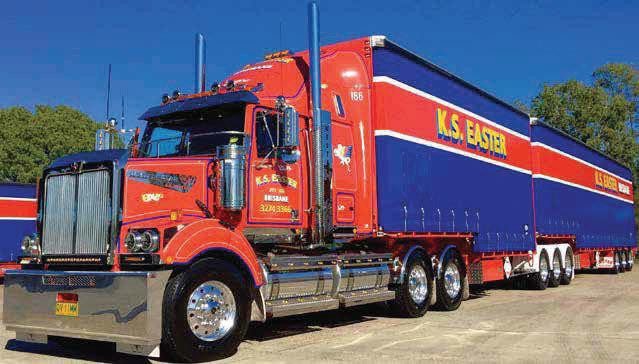
MC LOCAL, LINEHAUL & 2-UP DRIVERS WANTED
(Brisbane, Sydney, Melbourne and Adelaide Based)
Come and work for us as we are committed to: Training and further education • Your safety Maintaining an impressive Fleet permanent full time and roster positions including paid leave entitlements and public holidays. Drivers will need to be available to be scheduled for work falling across the 7 days of the week.
The successful Applicant will: Hold a current MC licence (minimum two years) • Have knowledge of the HVNL and Load Restraint • Be professional • Be reliable
To apply for the Operations/Driver positions please contact Operations Manager or by emailing your resume to WORKSHOP MECHANICS & TYRE FITTERS WANTED (Brisbane based only)
To apply for Mechanic positions please forward your resume to Workshop Manager via email to employment@kseaster.com.au









